Family Vacation to Vietnam
From Danang we took the overnight train to Nha Trang. Unfortunately, the train I'd wanted to take was fully booked, so we had to take a less-desirable train that left at 1:45 a.m. and got in at 11:00 a.m., which is why we had a hotel room in Danang to begin with. We woke the kids up around 12:30, limped our way the long distance back to the lobby, and took a taxi to the train station. Sadly, we didn't manage to see the dragon bridge lit up, but thankfully, we didn't forget anything at the (not nearly as friendly as in Hanoi) hotel this time. It all worked out--Robert bought water and also a can of a (mediocre, but fun to try) local lemon soda while we waited for the train, and I limped my way down the platform and managed to hoist myself up onto the train and into our compartment. This train was not the Livitrans, and was distinctly less nice, but I was pleased that I'd hoarded two of our four free instant noodle cups (A Thai-flavored spicy ramen) from the previous train. "What do you want to tell Miss Alyssa [piano teacher] about our vacation, Samantha?" I asked, when we'd been home for a week or so. "What was your favorite thing?" She thought for awhile. "Those noodles on the train," she said, without any prompting. "Those were the bestest noodles I ever ate in Vietnam or anywhere in the world. I really loved those noodles." When we got off the train, we were met by a guide from the Vietnam Easy Riders, a group that normally does motorcycle tours, but according to their website also offered a Jeep tour option. The Jeep seemed much better for our family than a bunch of motorcycles (though I did see a woman nursing a baby on the back of a motorcycle, that was clearly not going to be me), so that's what I booked. The Jeep came complete with an older driver who owned the Jeep, maintained it lovingly, and spoke zero English, and also a motorcycle-riding guide who was young and cool and spoke pretty good English (though Robert was curious how good his English was when he started the job two years ago). Our luggage mostly went on the back of the motorcycle, with our backpacks strapped onto the sides of the Jeep, and in we climbed.
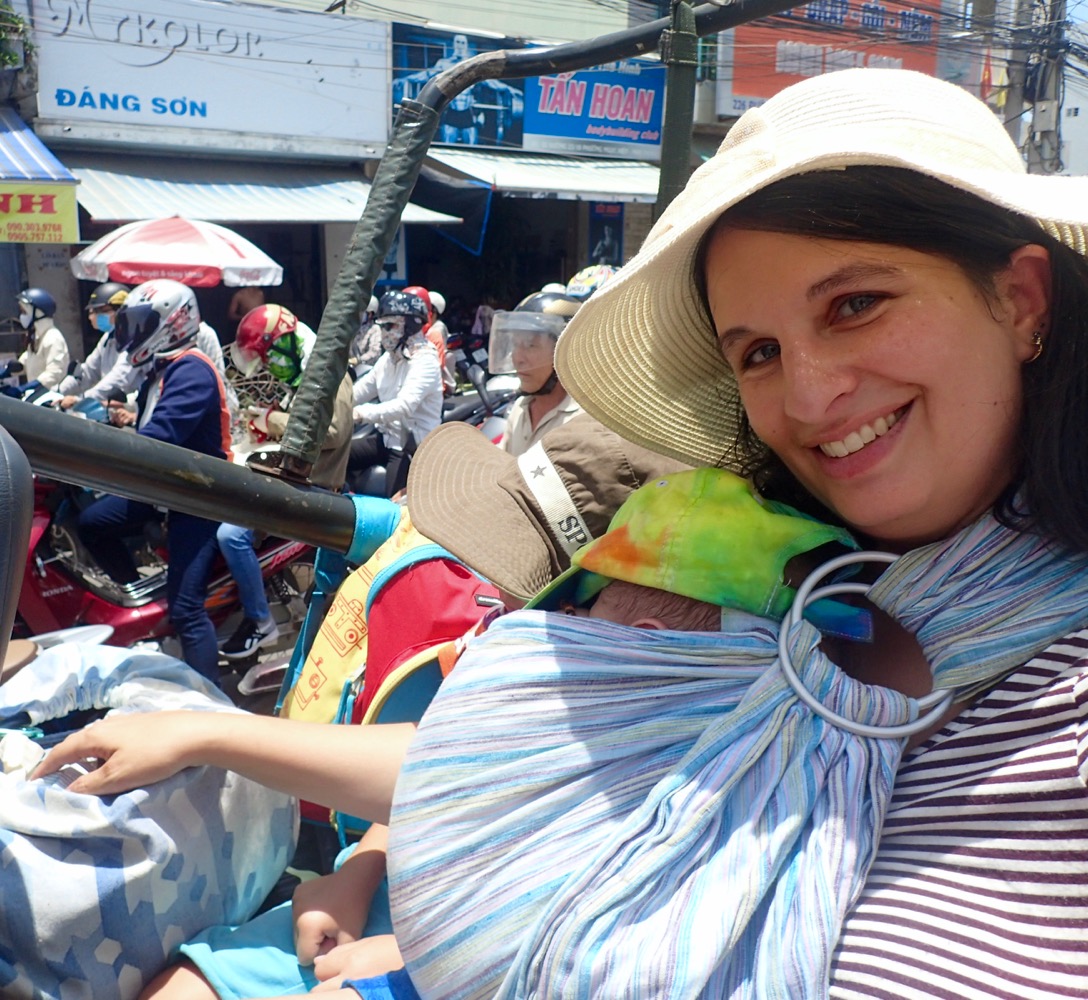

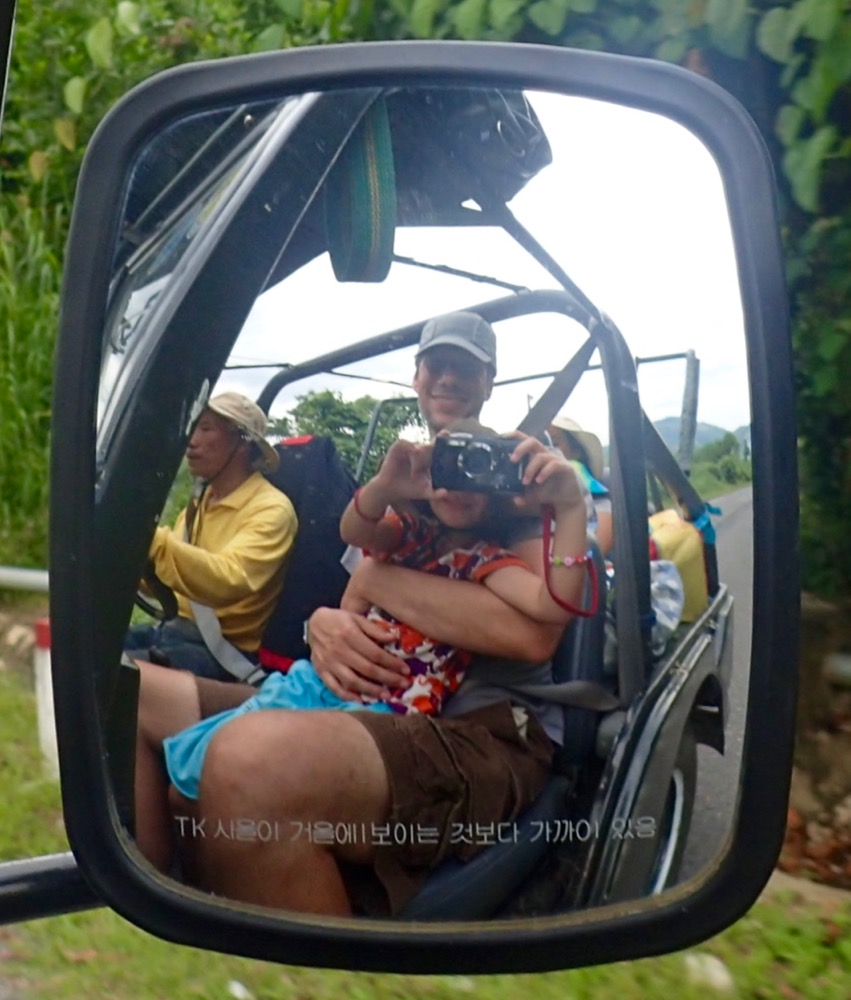
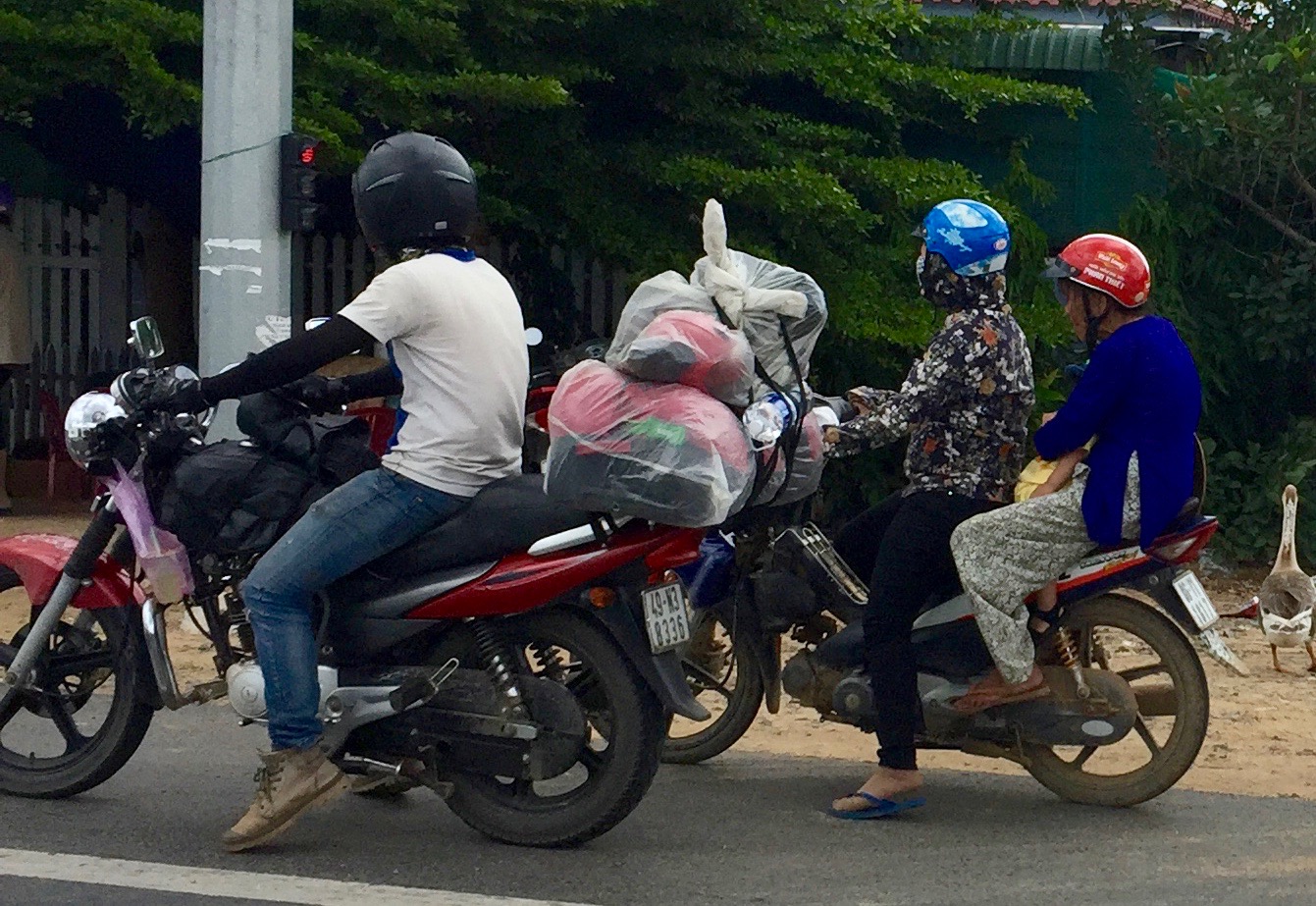
Hey look, there's our big red L.L. Bean duffel bag, all wrapped up in plastic!
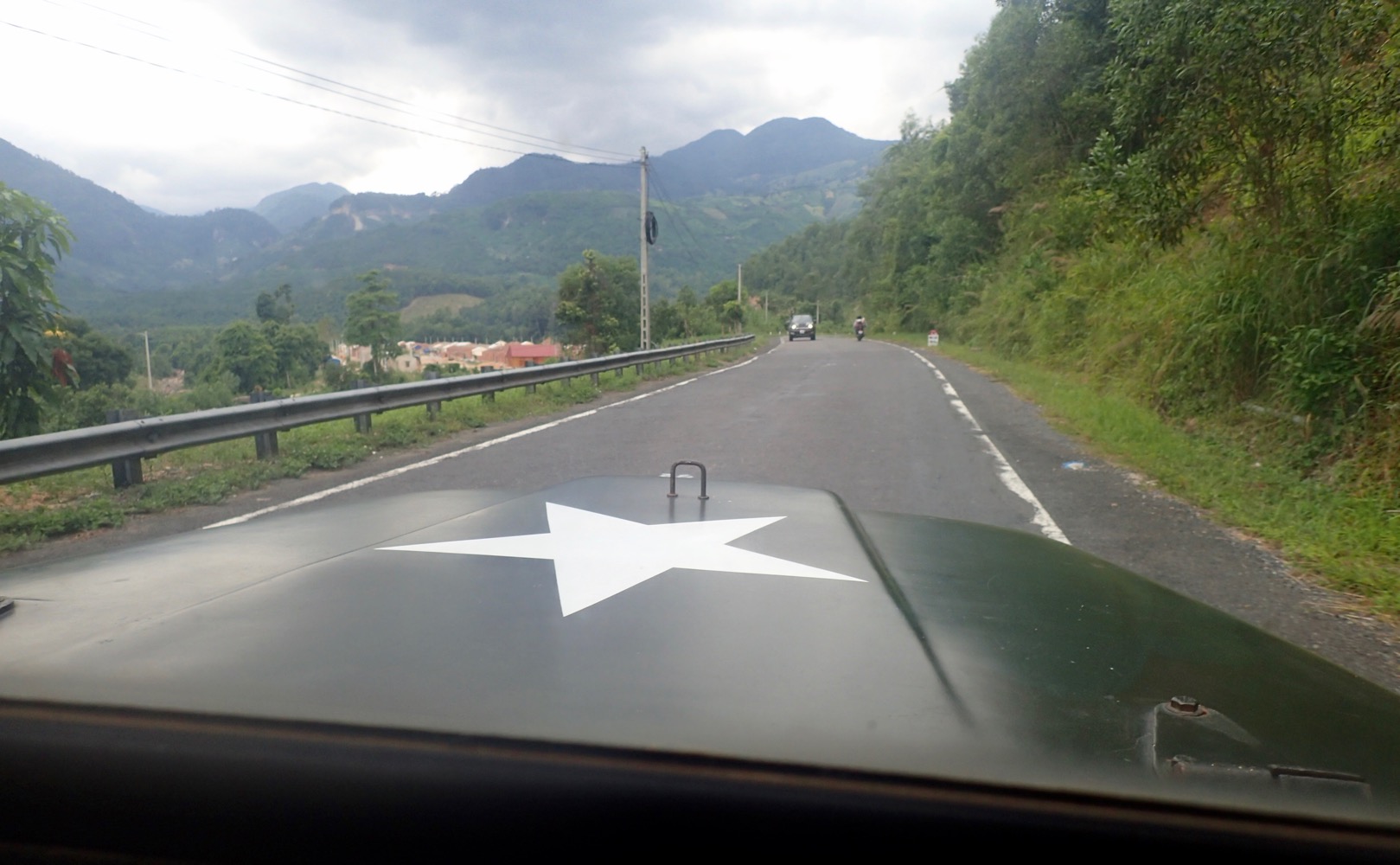
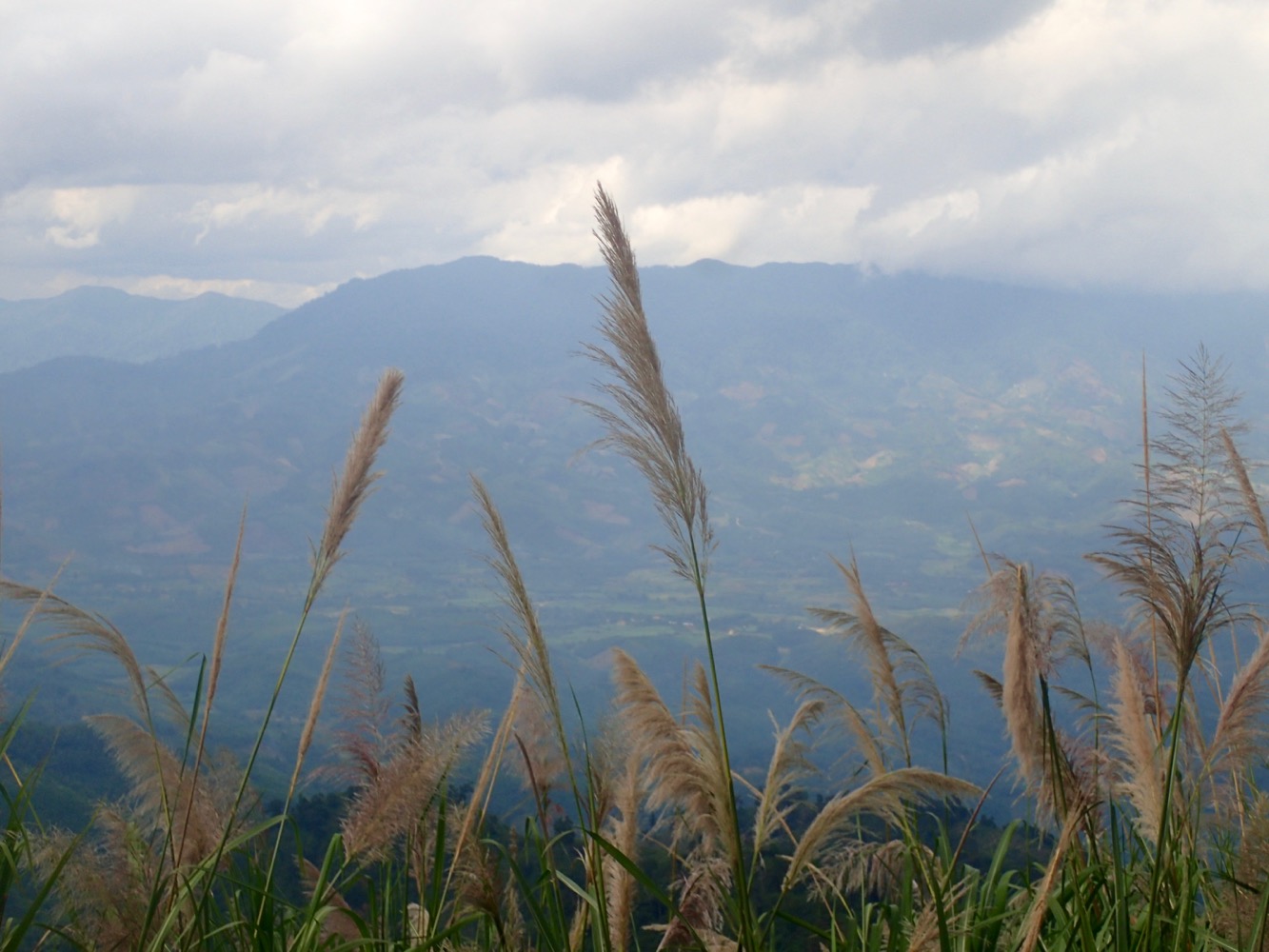
The Jeep had a star painted on the front. "Do you think this is a real U.S. Army Jeep?" asked Robert. "Uh, no," I dismissed the idea. "Don't you think they just painted that on there to be cool?" Over the next three days and two nights, however, Robert built up his case. "It's pretty old," he said. "Did you see the fuel gauge?" "You mean the way he checks a long stick? Yep..." "And it really doesn't move too fast," he observed. Eventually, he asked our driver--who looked blank until our guide translated--how old the Jeep was. "Forty-five years old," came the answer, so there you go. "How do you think he held onto that Jeep during Communism?" Robert wondered next, but no one was going to translate that.
We drove northwest, inland and upward in elevation, from Nha Trang (on the coast, like most of the rail route) toward Dalat. We stopped along the way to see rice growing in the fields and to listen to our guide talk about how it's cultivated and picked, and we made another stop for lunch at a restaurant that had hammocks near the tables, and a series of dogs that adored the chicken bone our guide off-handedly tossed them. Marcus was immediately sold: why had we never told him that feeding bones and scraps to dogs was one of the world's best activities? How had he never engaged in this sport before? He set about remedying that.


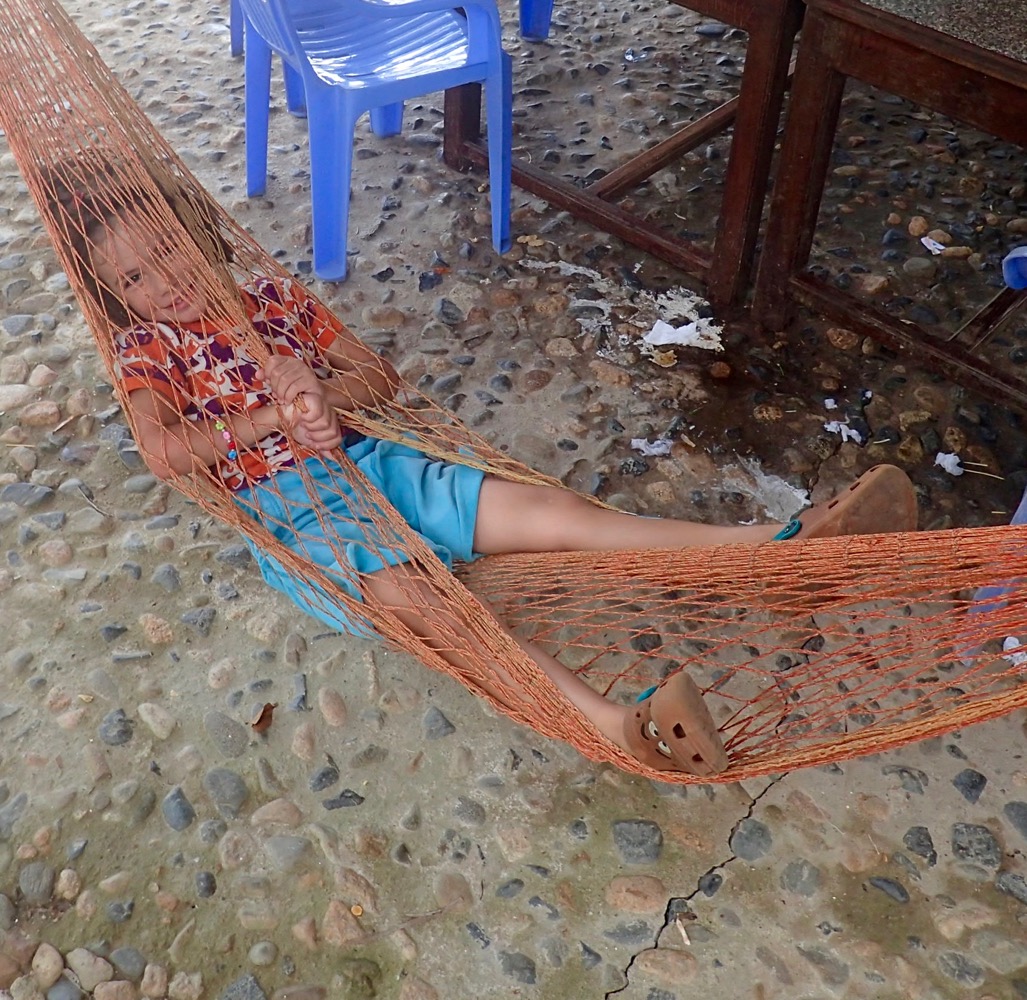
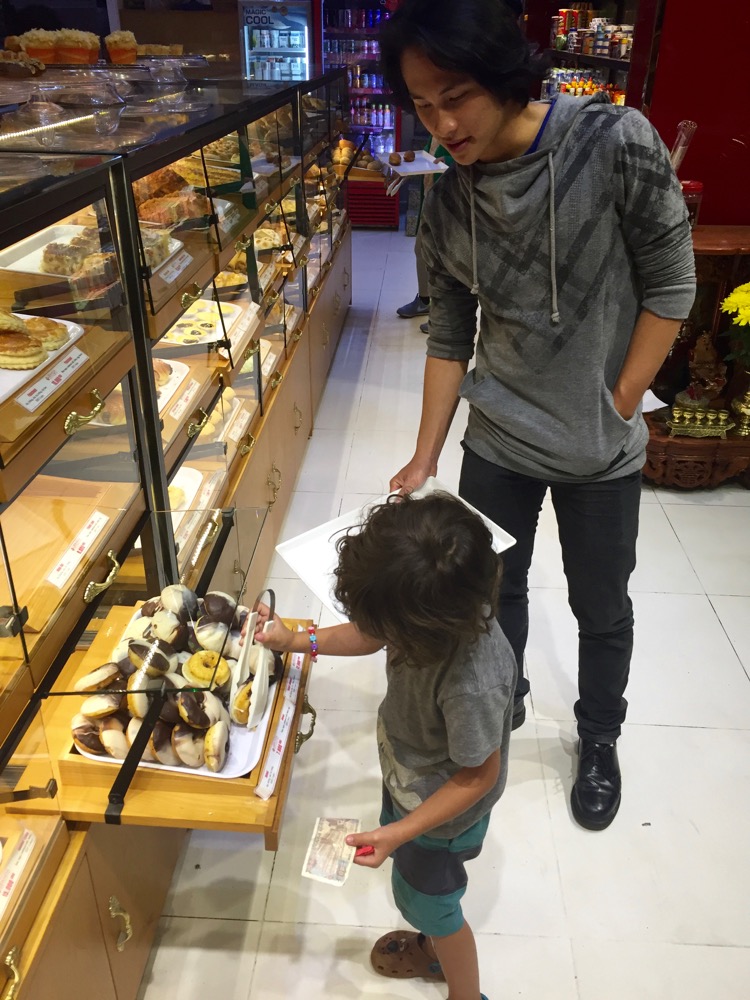
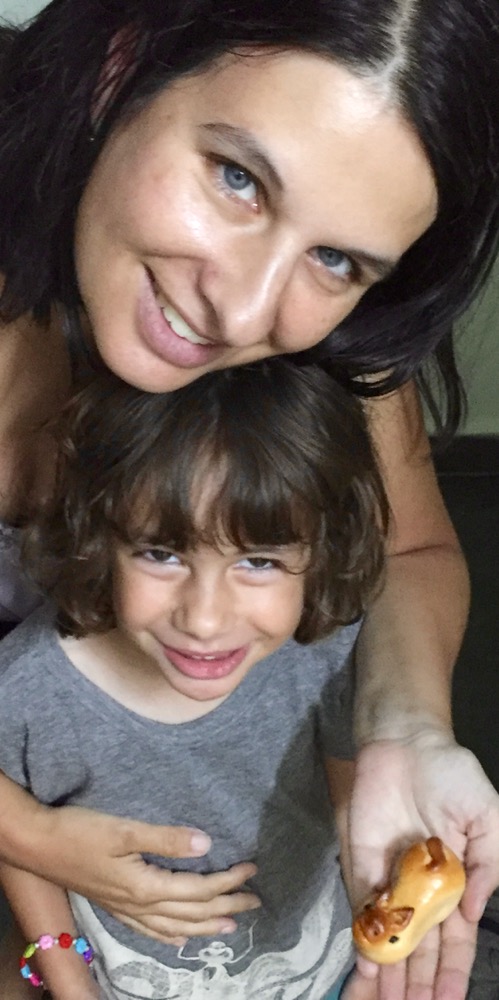
We drove up a twisty mountain pass in the bouncy Jeep through drizzle, and then--after our driver stopped to put up the top of the Jeep, and our guide donned his rain gear--through heavy rain. Water was literally pouring down the back of my shirt and pooling up on the seat, soaking my skirt down to my underwear, and the rain was so heavy at times that I couldn't see in front of the Jeep. Our driver was clearly one with his Jeep, and was also cautious, because of his economic investment in it, but the fact that we'd routinely detour into oncoming traffic (as would others, too)--and again, over bumpy, windy roads--was a bit nerve-racking for me. I kept Helen sleeping or nursing, close against me in the sling, and Samantha either next to me or on Robert's lap (the latter probably a significantly dryer spot for her) and we all made it to Dalat unscathed. Traffic on the mountain roads, as well as in the big cities, really flowed much more harmoniously than you might imagine. Though there was a lot of honking, it didn't read as an annoyed you-jerk-what's-the-matter-with-you honk from a New York City driver, but rather an informative honking, telling others where you were. No one seemed angry in traffic at all, really.
We got to Dalat close to supper time and checked into the "guest house" that was included with our tour. Nowhere in Dalat had any air conditioning because it was in the 70s here. (As one of our previous guides had said, in another city, "You are going to Dalat? Do you have warm clothes? It is cold like winter there!") Still, it was incredibly humid, and the air was not quite crisp and refreshing. Marcus fell asleep immediately upon getting to the room, so Robert and Samantha joined our guide to go out to dinner for roll-your-own springrolls, some of which Robert brought back to me, and a stop at a bakery where Samantha got, among other things, an adorable pig-shaped pastry. The springrolls were different (no surprise) than those we'd had in the U.S., but every time we'd had fresh spring rolls so far there had been a distinct flavor, unpalatable to us, which we were completely unfamiliar with. This time was no exception, but our food tour guide in Hoi An, when we had described our spring roll dilemma, had tried to teach us the names of the particular herb responsible for that flavor ("It is called fish herb," she said. Hm. At home, the Internet confirmed that--fish mint, though it's not actually in the mint family) and more importantly the looks of it, so we could carefully avoid it. It really was quite a fishy, bitter herb, and though we hate to admit it when we dislike things, both Robert and I were actually happier not having the fish mint in our life.
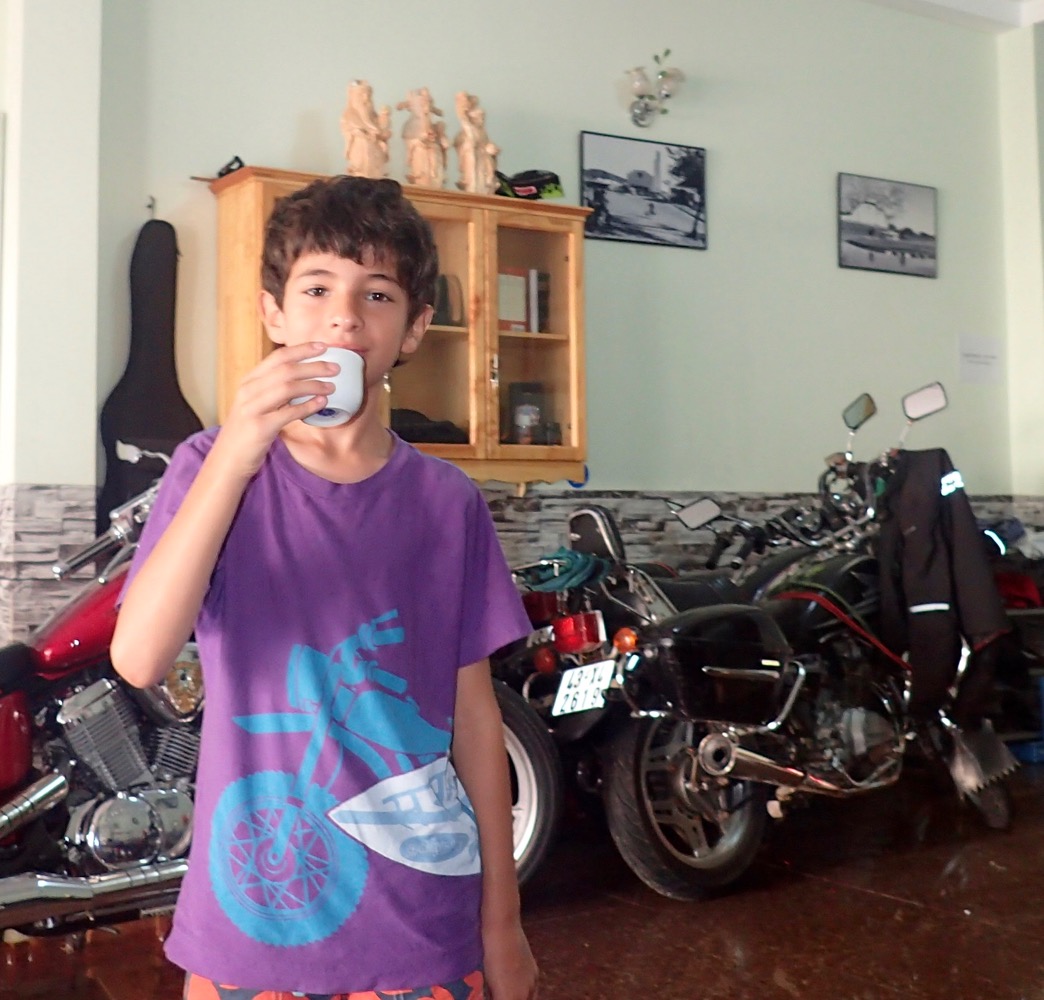
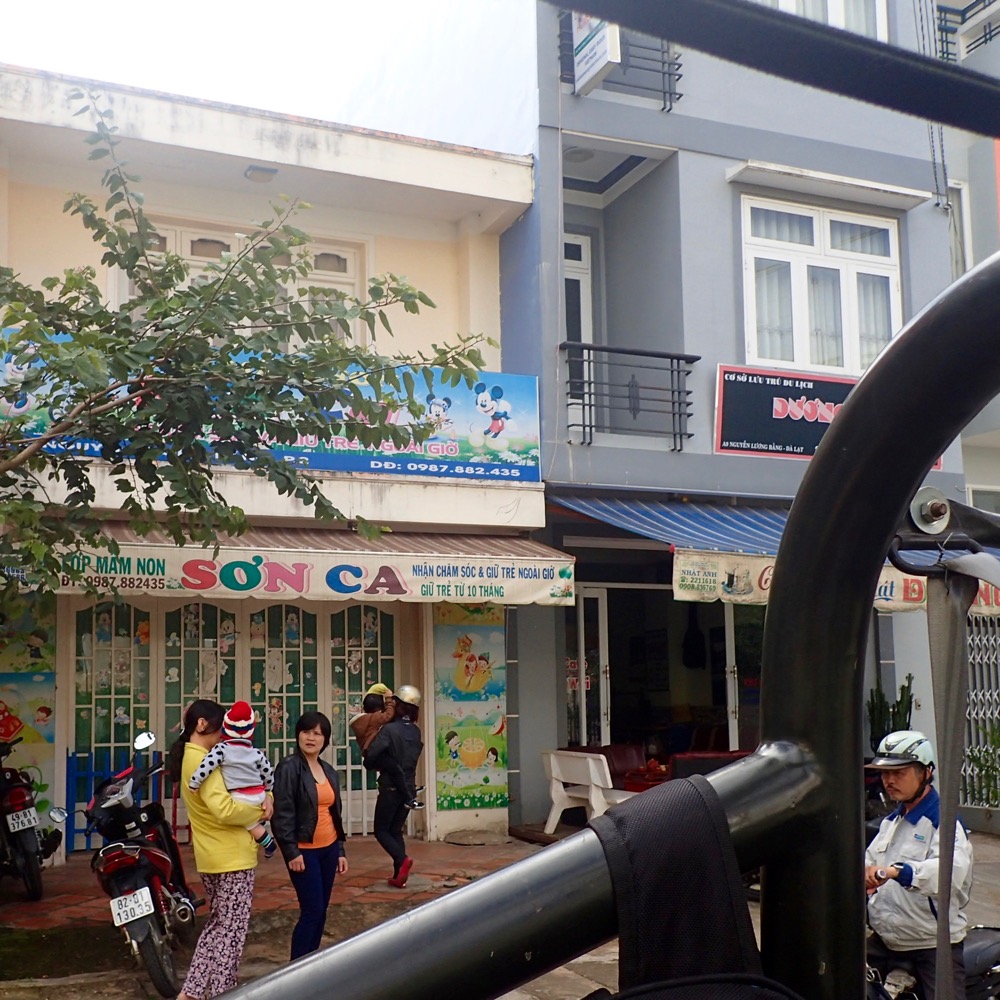
In the middle of the night, Samantha got sick again ("Are we ever going to have one day with no one throwing up?" asked Robert. So far, no, we hadn't), and I panicked and tossed all the rest of the bakery treats in case one of those was to blame. Still, she woke up the next morning refreshed and ready for the day, saying she was hungry, and looking good, so we just tried to follow her lead. Breakfast was not exceptional--tea, plain omelets, and plain bread with homemade strawberry jam (we'd seen lots of strawberry farms when driving into Dalat the night before) and iffy-looking margarine--but it also involved a walk to see a cat, a visit to the daycare next door to the hotel, and the interesting experience of eating breakfast inside, in a room in which you couldn't wear your shoes, sitting next to half a dozen parked motorcycles.


After breakfast we got back in the Jeep (I decided to keep my ankle unwrapped for the day, and it was already starting to feel better, but I still stayed in the Jeep for most of the agricultural forays) and visited a pepper farm and then--which the kids were super excited about--a weasel coffee farm.
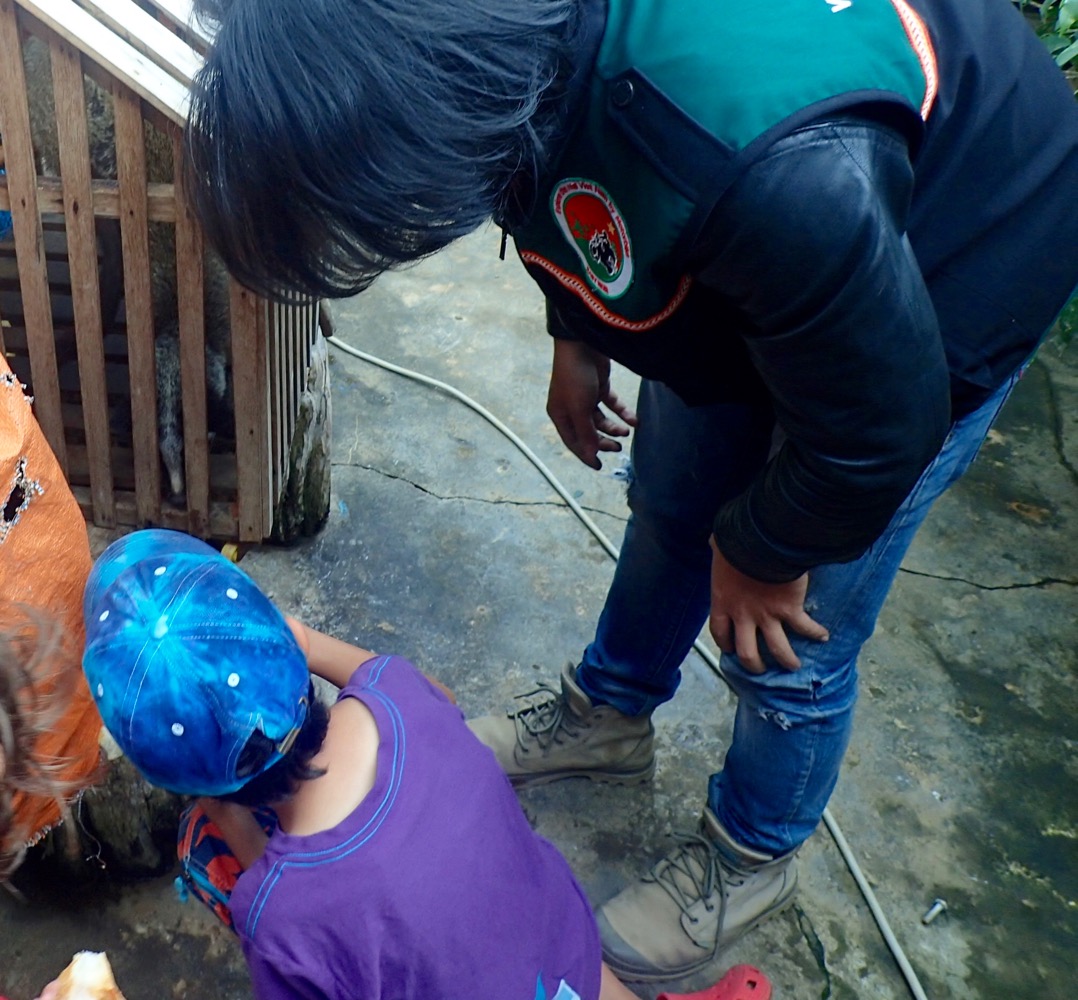
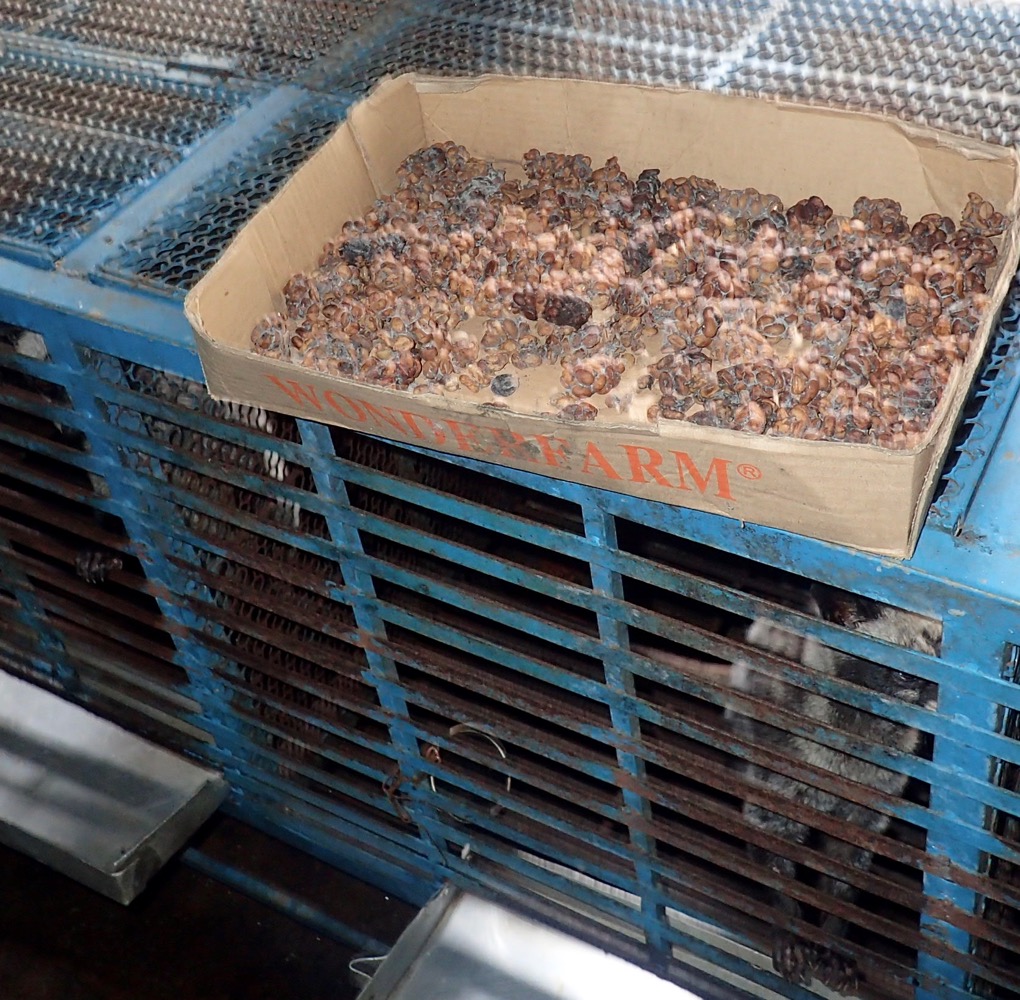
Marcus was fascinated with the digestive processes of those coffee-loving weasels, and Robert was fascinated with the economics of it ($40-$80 a cup in other countries, 200 VND in other cities here, 80 VND here at the farm), so Marcus fed the weasel about a hundred coffee beans while I sat on coffee-wood furniture (gorgeously knotty--apparently coffee plants have to be cut down after a certain number of years, as their yield changes, so then they're used for furniture, firewood, and tourist junk like ashtrays) and Robert drank a cup of coffee. Both kids sampled it too, and I have to say that scent-wise it was really chocolatey and round and pleasant, not bitter at all.

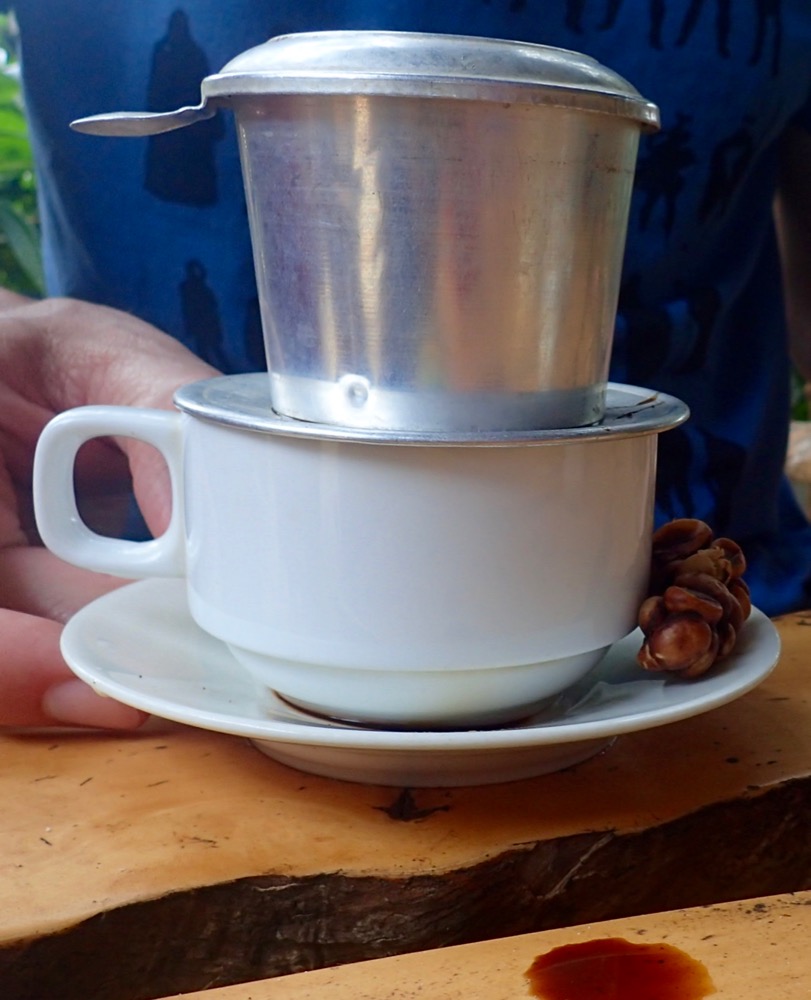
From the weasels we went to a silk factory, where first the kids got to ogle a box of silkworms. Marcus held one in his hand, cuddling it and walking around with it for about half an hour.

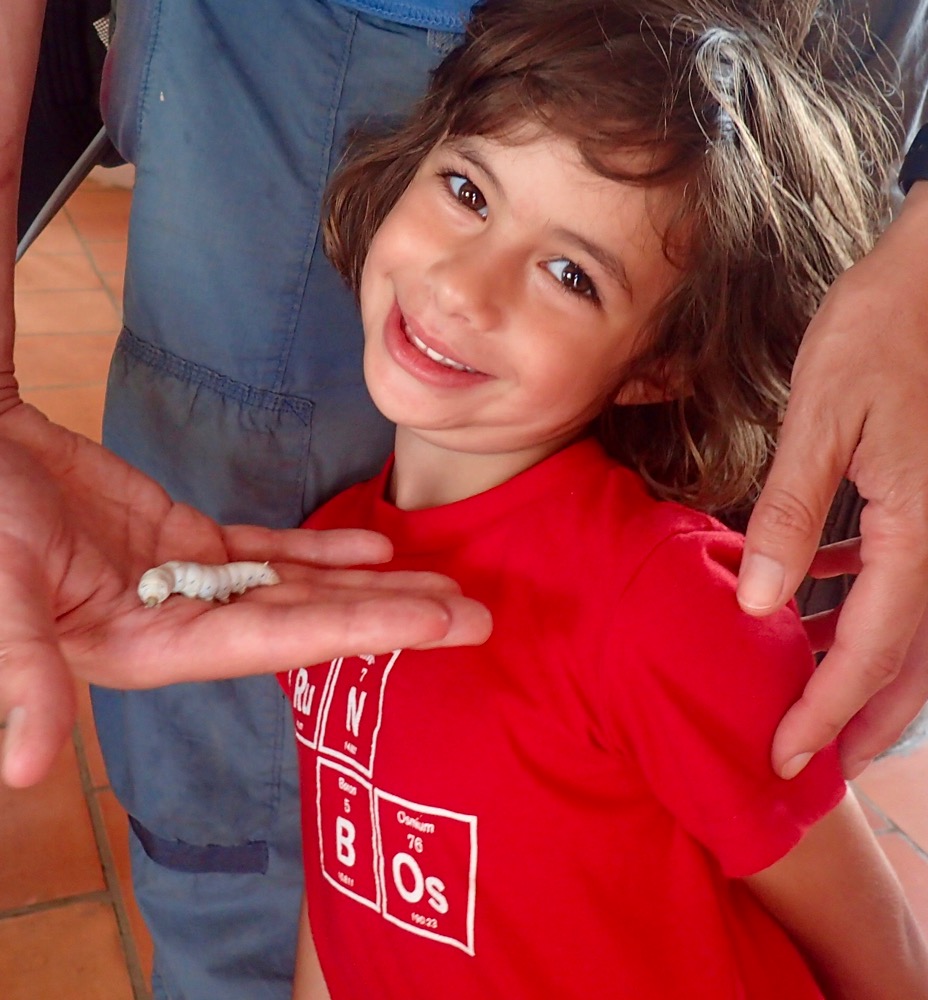
We saw the embroidery room, and then we toured the factory floor.
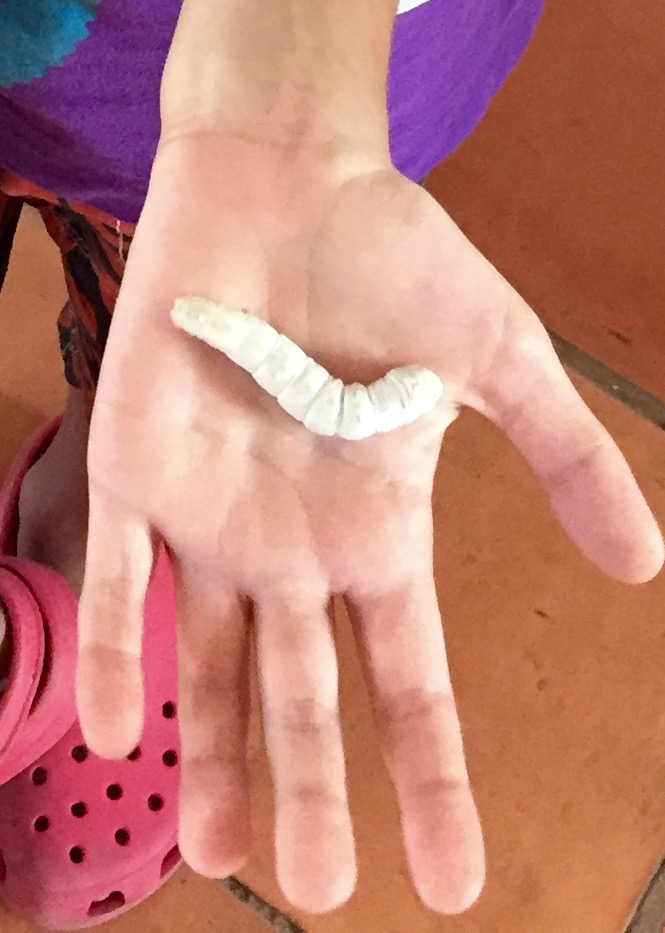
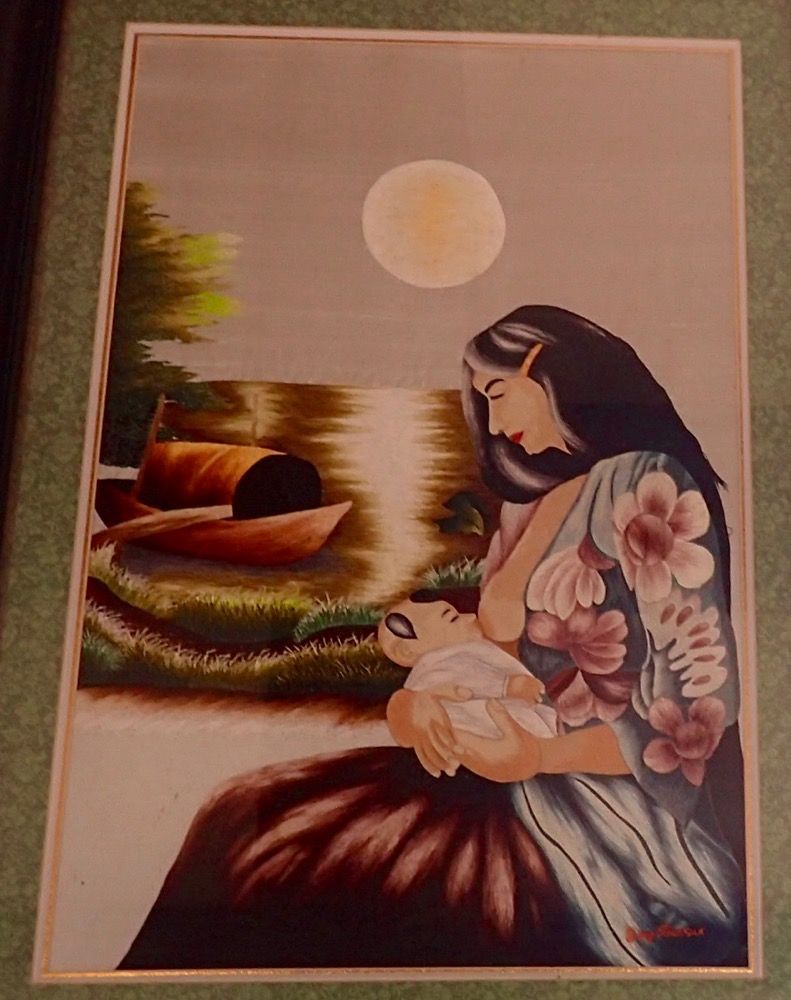

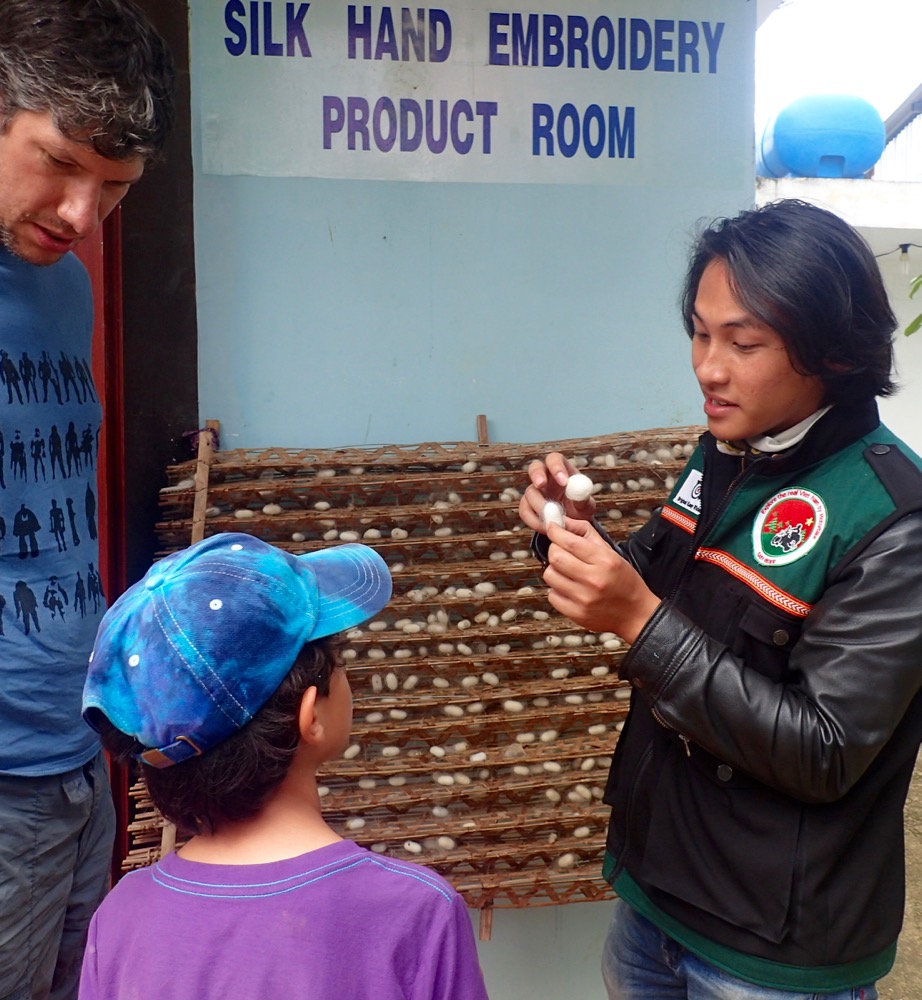

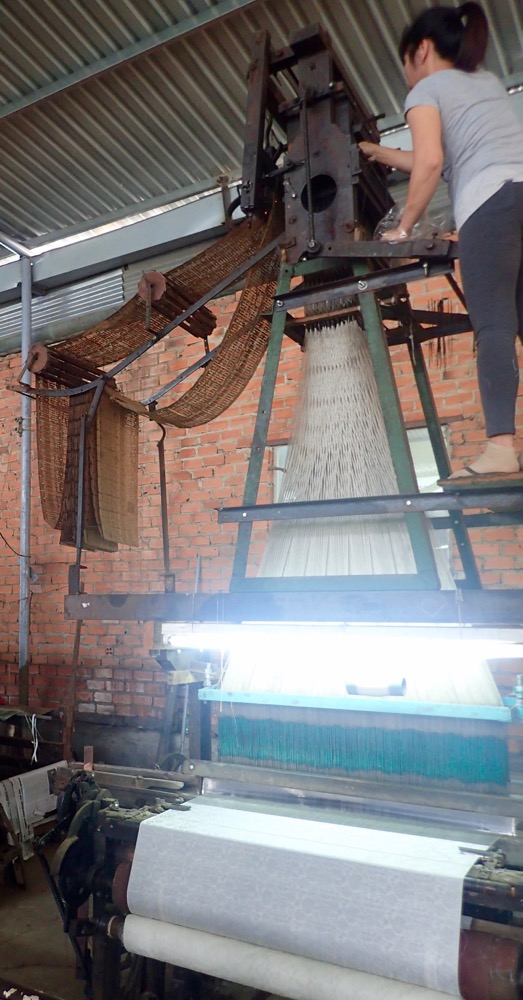
Hello, Lowell 1880s! No one seemed miserable, or in precisely sweatshop-style conditions, but the lack of safety measures (protective glasses, hairnets, shields on the machinery, to name just a few) was definitely startling.
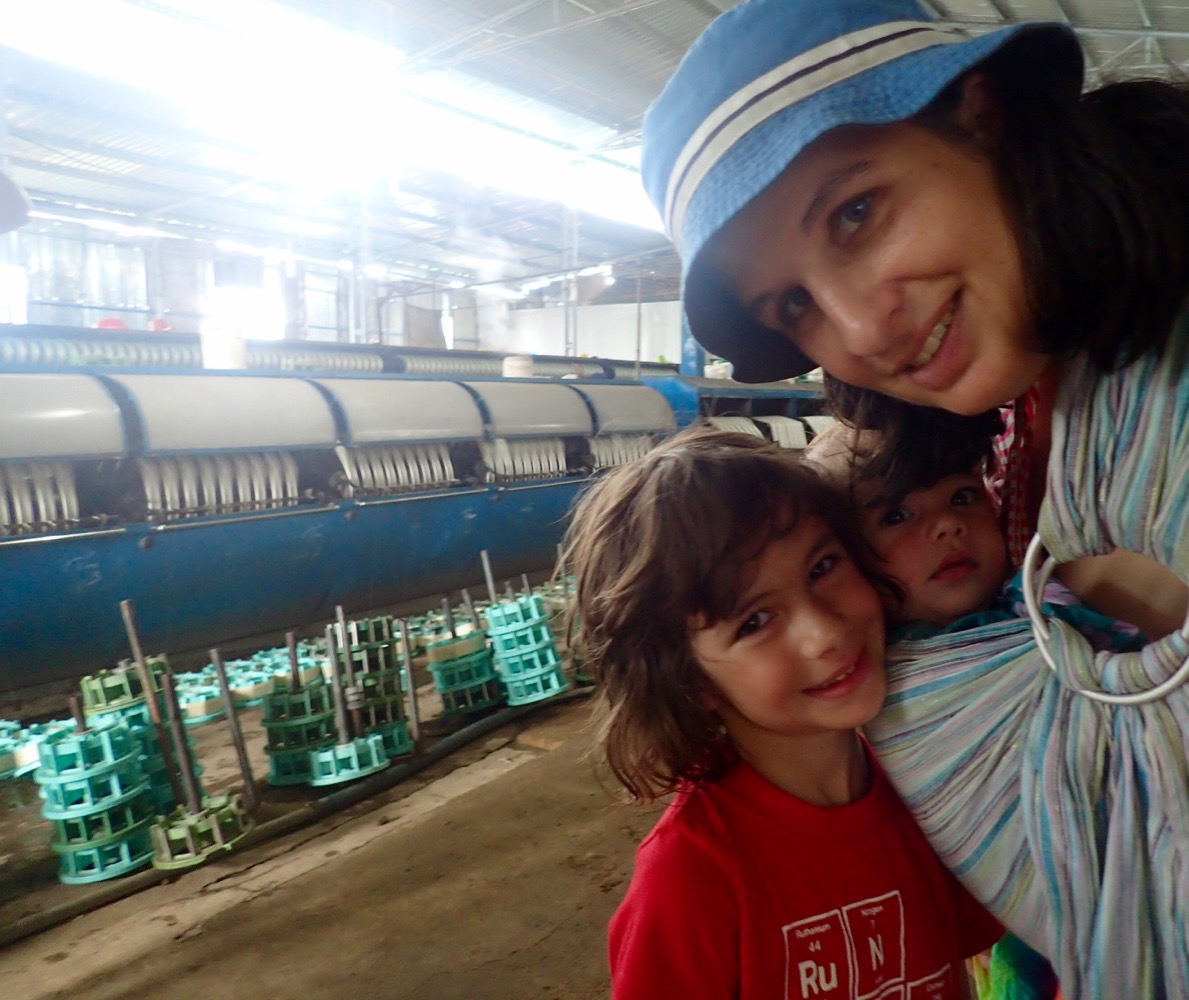
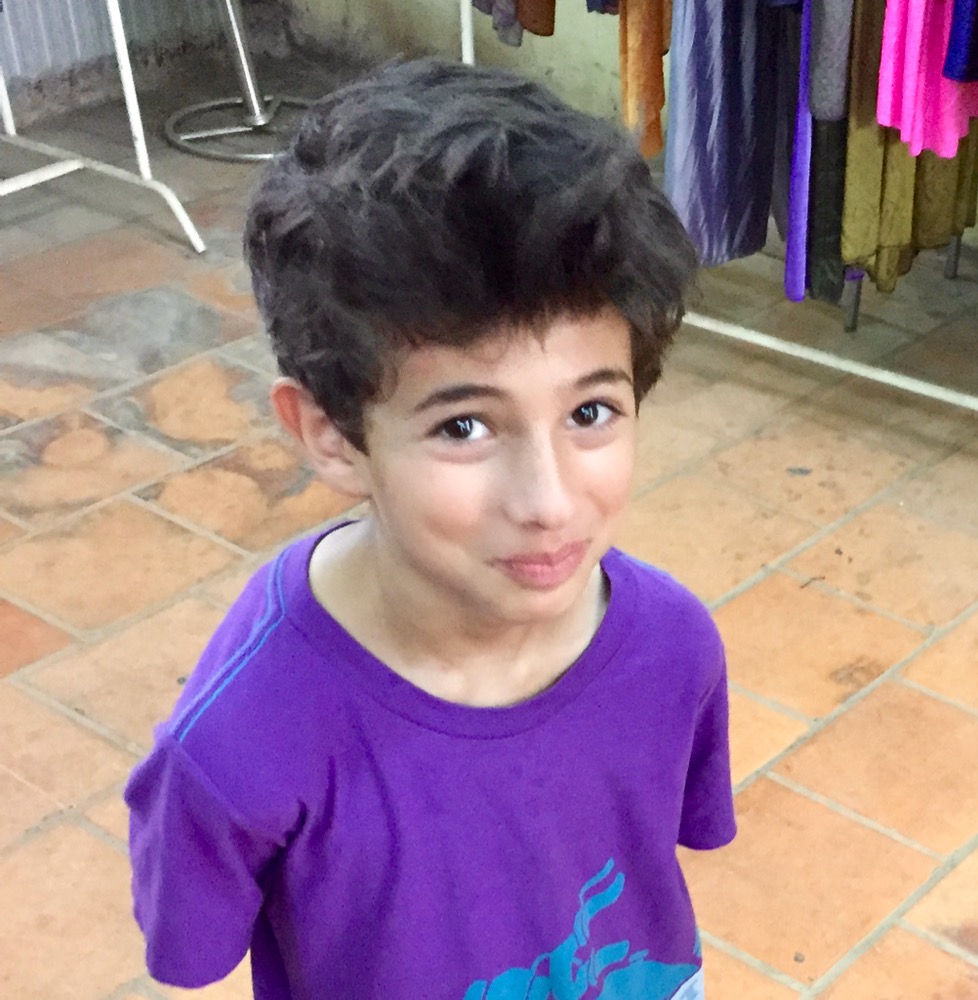

In the last room, Marcus and Robert sampled some stir-fried silkworm larvae. There was a complicated explanation--complete with people holding up one cocoon and explaining about that type of cocoon, and then holding up a second cocoon and explaining about that type of (identical in appearance to us) cocoon--about how they decide which larvae to let continue developing for silk, and which to sell in the market for food, but we all missed the explanation. We bought some silk souvenirs--a pocketbook shaped like a traditional silk blouse for Samantha, with the neck of the blouse the top opening of the bag, and a three-colored tiered skirt for me.
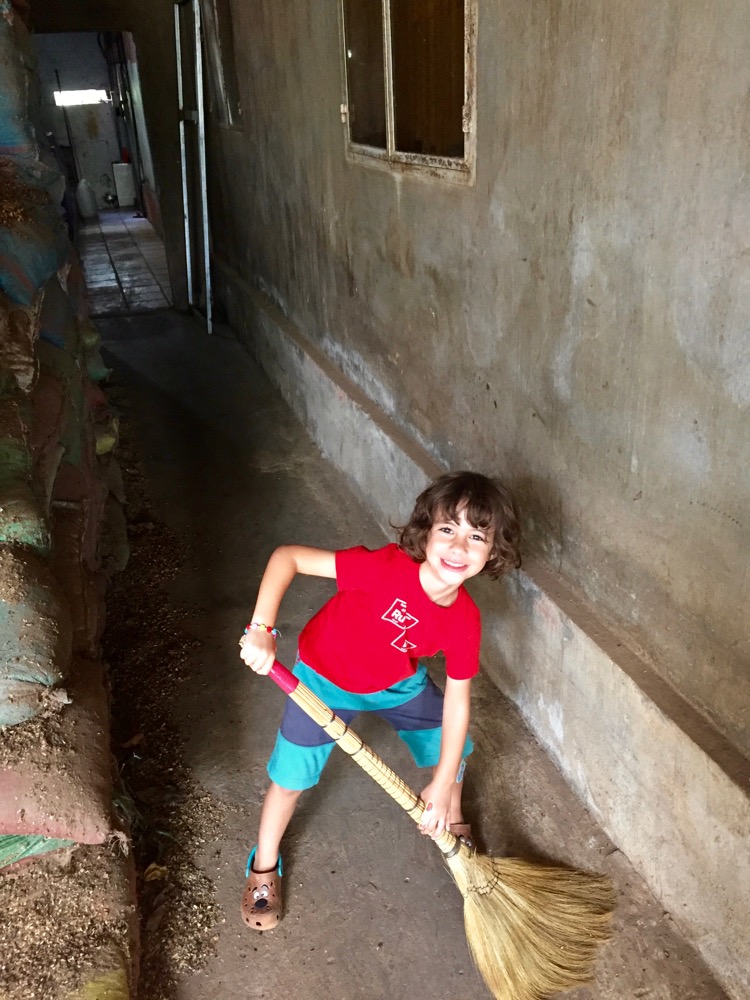

At both the coffee farm and the silk factory, Samantha discovered Vietnamese straw brooms--adorable and effective (at left she's sweeping the weasel coffee farm) and just her size. On our last day in Saigon, we bought her a broom of her own, and it now has a prominent place in our home.
From the silk factory we drove to Elephant Falls. Here I waited on a bench in the shade at the top, which was clearly a good idea. Samantha and our guide came back, one of them (I'll just let you speculate which one) entirely covered in mud, after having only gone partway down to the falls, but Robert and Marcus continued the hike to the end.
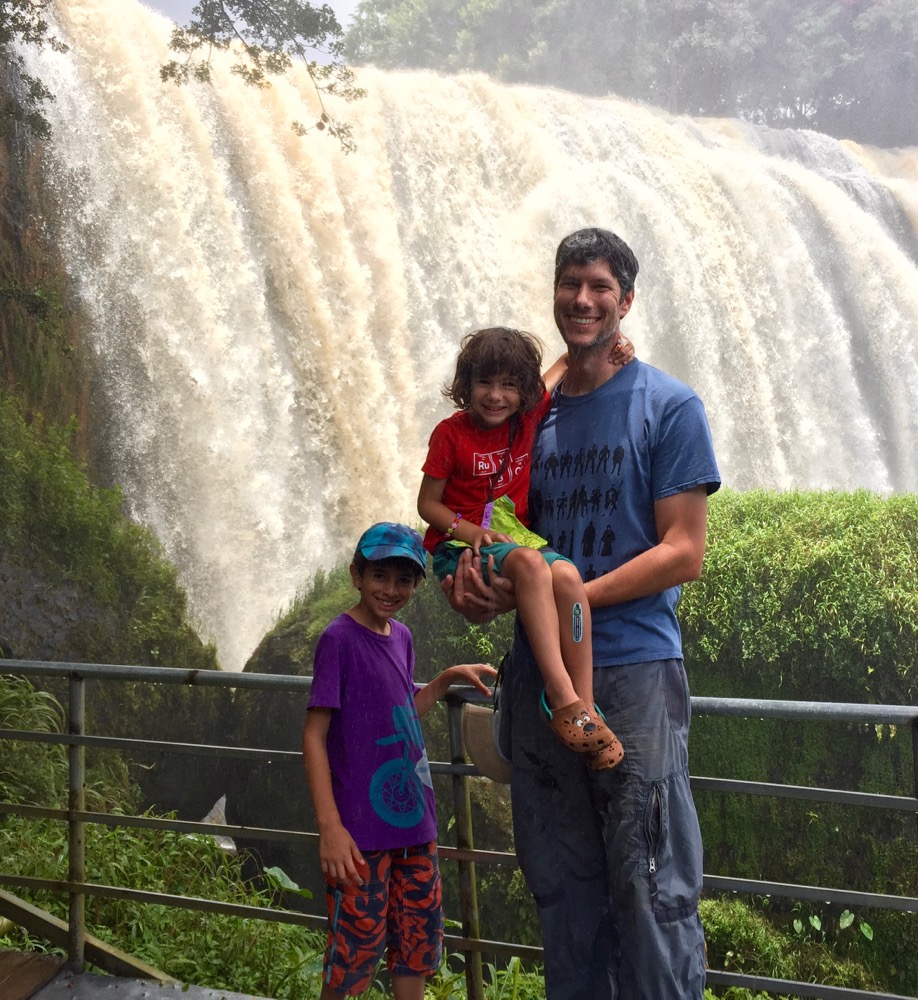

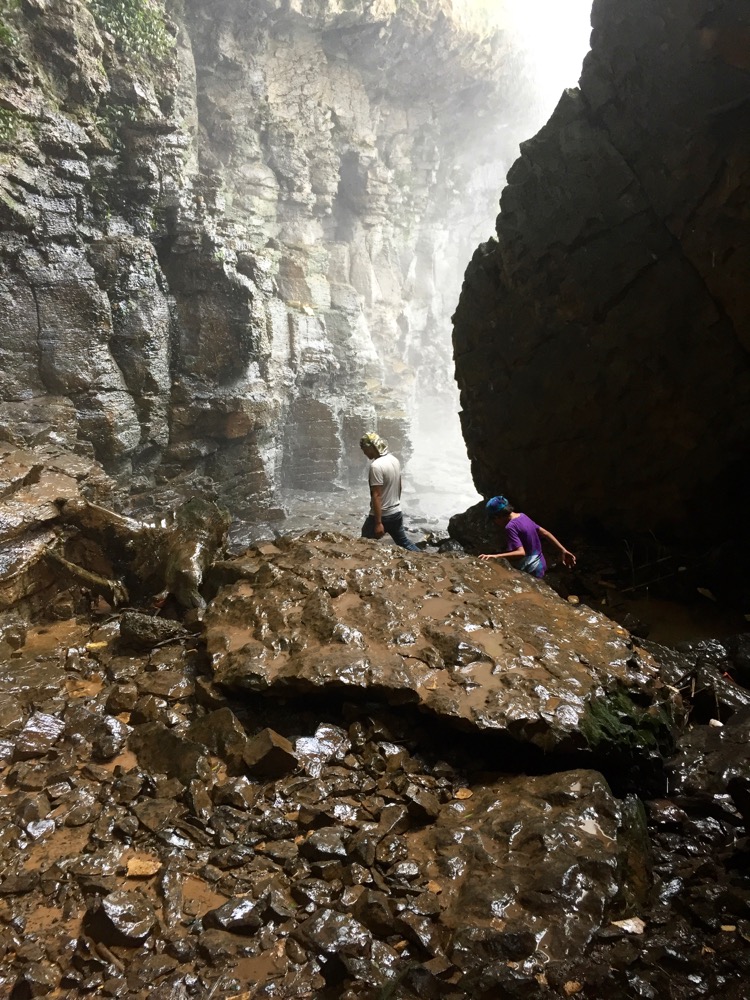

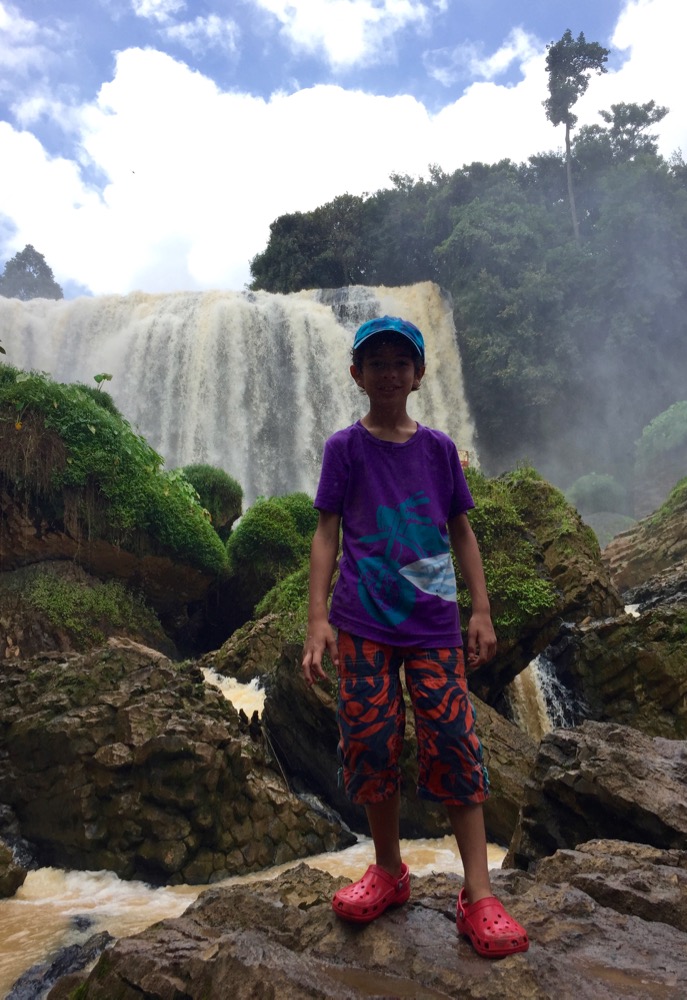
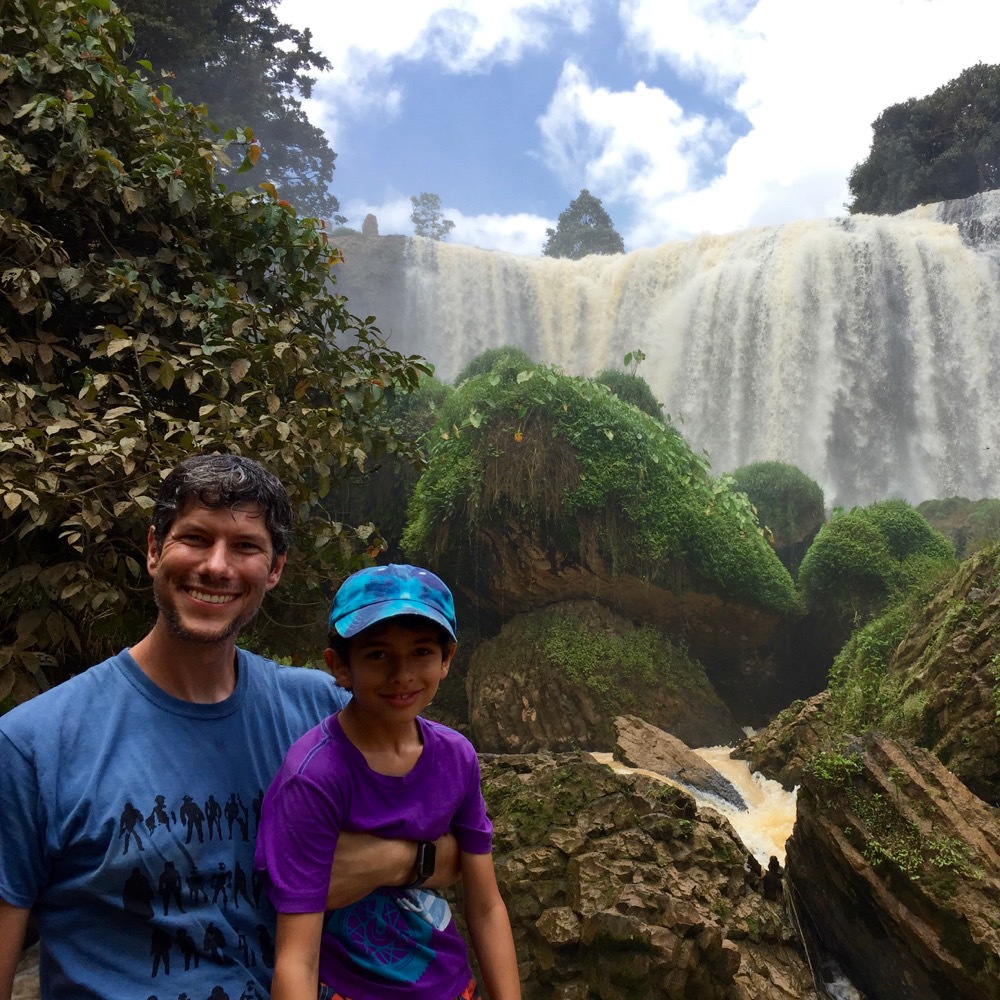
We had lunch at the top of the falls, and then again Marcus fed some dogs the scraps. A soda chan and some ice cream later, we were ready to pile back into the Jeep.
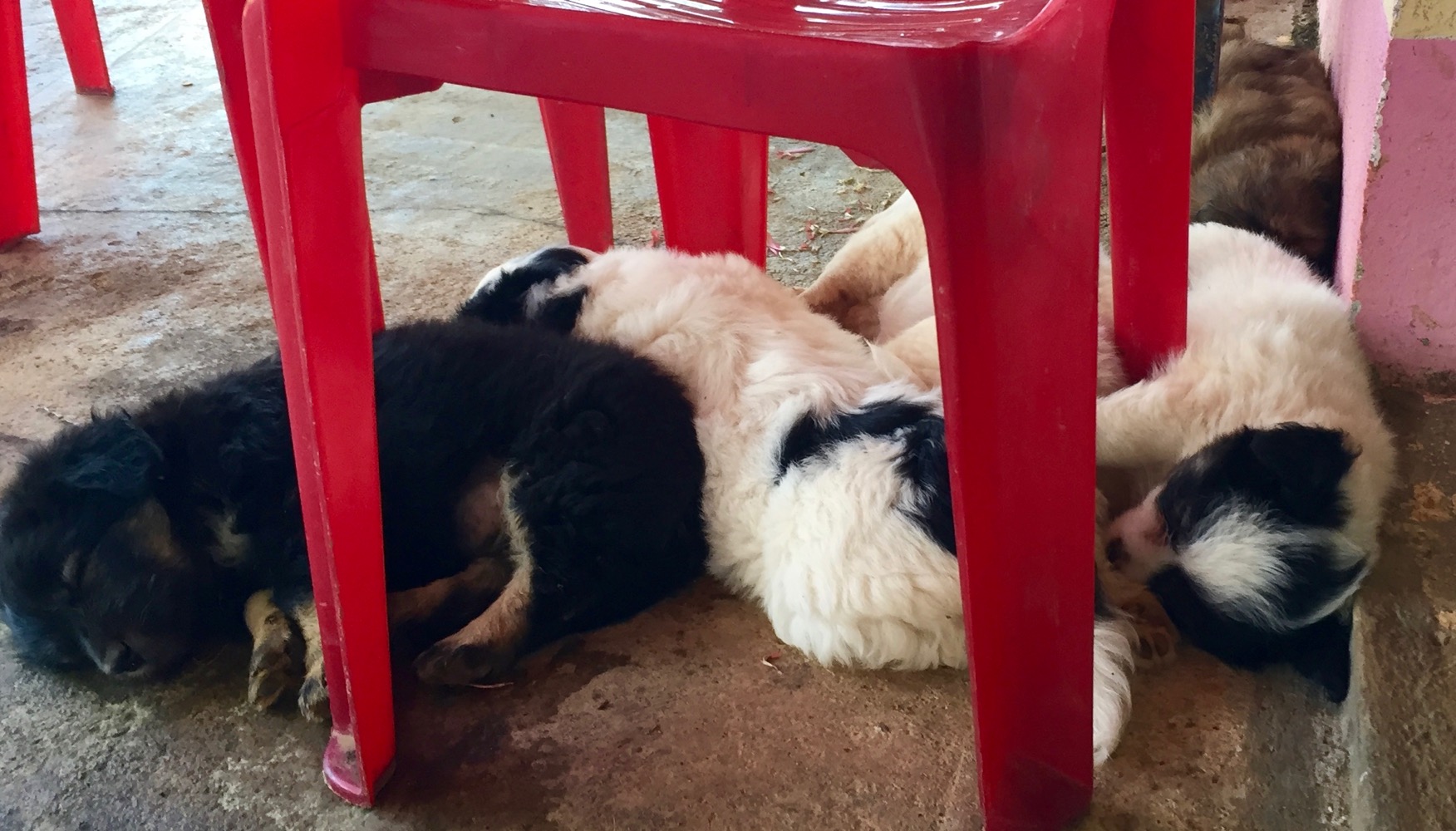
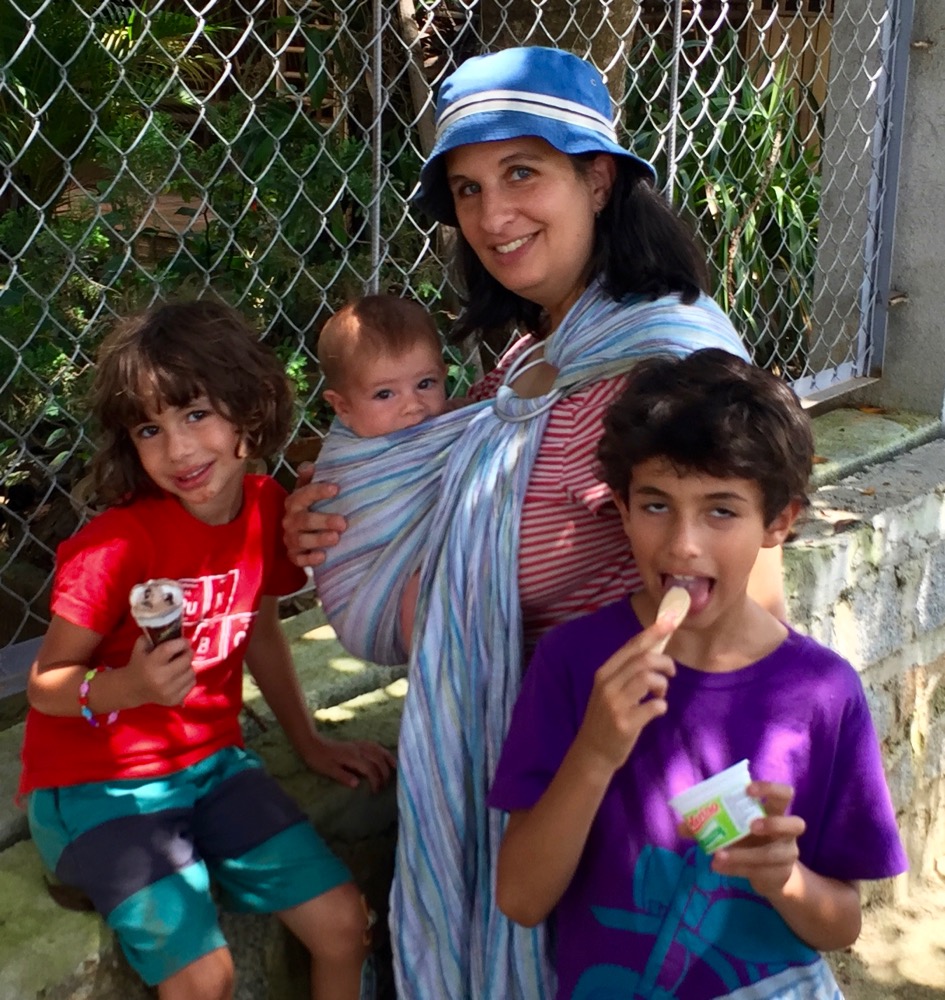


As we drove along, we saw a number of homes drying corn in their front yards on big dropcloths. We also saw a church, followed quickly by a Christian cemetary; these were very rare in the country, except for a couple older, architecturally-important churches in Hanoi or (especially) Saigon.

By this point we were driving through land now used mostly as coffee farms and inhabited mainly by the Koho people, one of the minority groups, nd we did stop to get a better look at some of their traditional-style homes (on stilts). House by house, though, the styles varied widely: one house might be traditional in style, while its neighbor is a modern-style Vietnamese house, though still simple (one floor, one room wide). Next to that might be a traditional-style house that the owners filled in the open under area to make a half-height basement/storage area, and next to that might be a modern-style house which is very large and fancy. Our guide told us that the Koho were indeed often Christians, as they were one of the earlier groups reached by missionaries in the 19th century, and they also tended to aid the Americans during the war, and so have historically been persecuted--both before and after the war--by the Vietnamese majority. Of particular interest to me was that the Koho (another matriarchal society) are clearly a culture that values babywearing--I saw two fathers, one grandmother, and about 25 mothers (presumably) wearing babies or toddlers in the villages we drove by. In all cases, the caregivers were wearing the babies in a simple piece of cloth tied in a traditional sling carry (sometimes known as a rebozo carry). The fabric used seemed to vary from quite thick, blanket-looking, to thinner, clothing-weight fabric, but as I was sitting in the back of the Jeep wearing Helen in a ring sling, I kept point to my sling and smiling at people and exchanging grins and thumbs up with them. Many of the wearers were riding motorcyles (the women at left below is indeed slinging, though she then has another cloth/blanket wrapped around her baby--it's tricky taking pictures of a moving motorcycle from a moving Jeep, and the dad at center and right below was pulling out of a gas station), but others were walking along the side of the road, and some were sitting on the front porch of their homes watching other kids play in the yard. I saw several women wearing just the sling, with the baby/toddler out and sitting on the ground playing with big siblings.


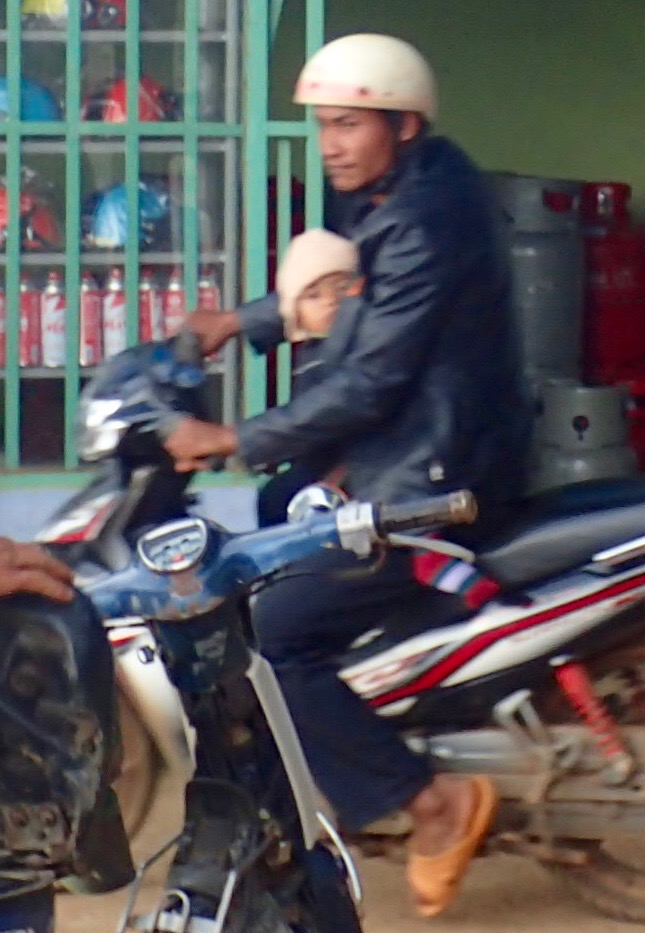
Beyond the Koho villages, we stopped at a tea plantation and looked at tea growing, and then we headed into our hotel for the night. After the guest house of the night before, my expectations were quite low, so Juliet's Villa Resort was a really pleasant surprise.
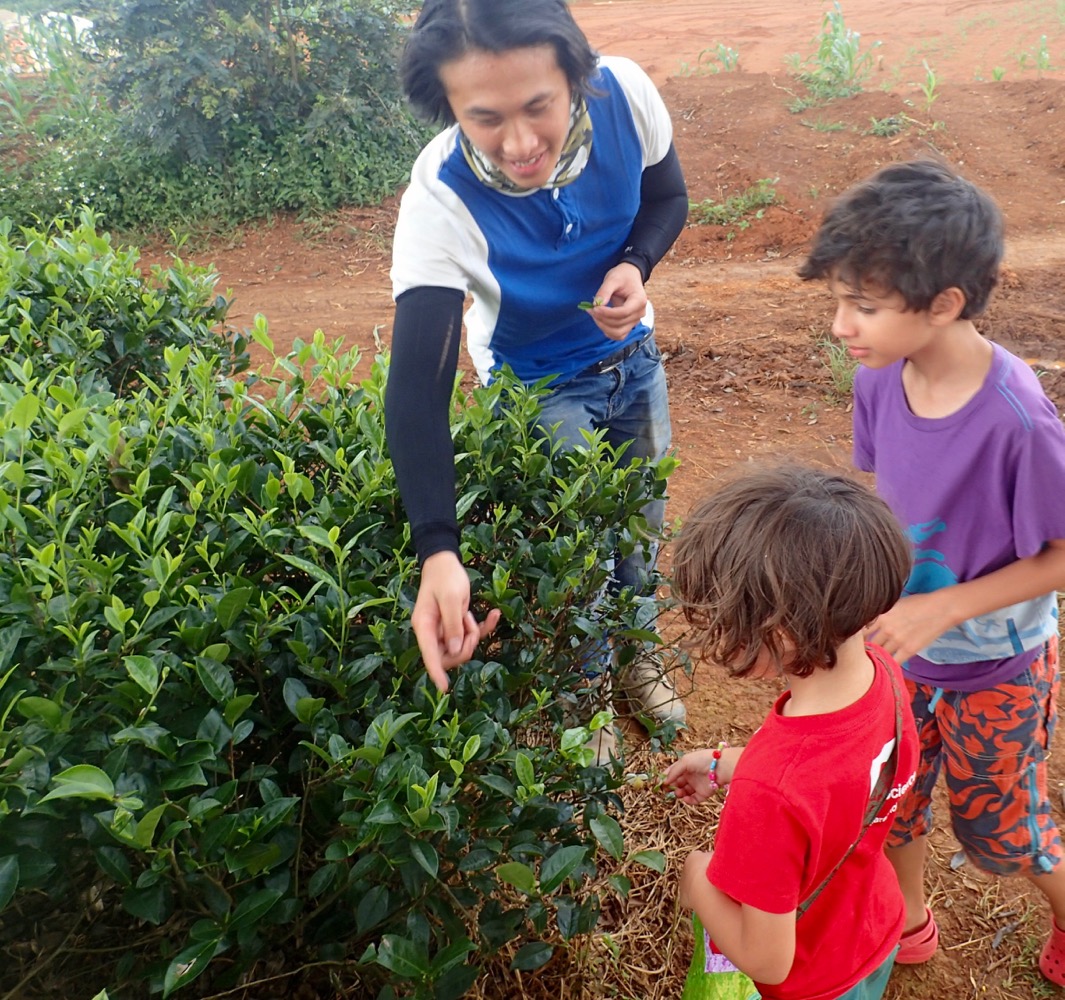
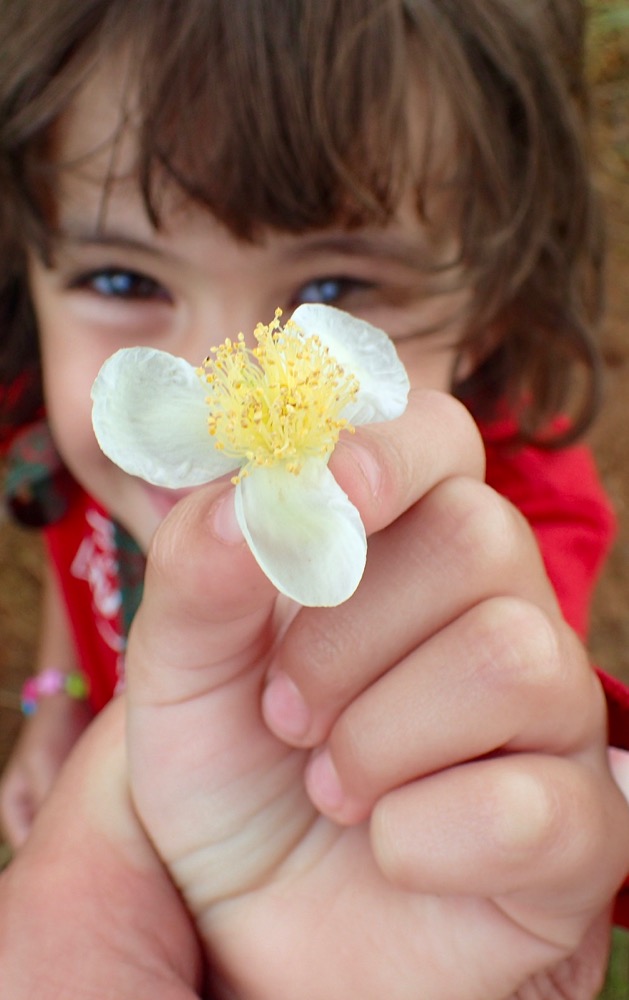

The resort is about five years old, as best we could tell, and clearly someone spent a lot of money to develop it. The individual villas were spacious, though the bathrooms were not particularly luxurious, and there were mosquito nets (note to self: next time, make sure the mosquito is outside the net before going to sleep) instead of air conditioning, but the grounds were gorgeous. Robert and Marcus hiked down to another (smaller) waterfall while I stayed with both girls, and then they came back and swam in the pool for awhile. There was a swingset and a balance beam, too, which the five-year-old daughter of the owners played on next to Samantha. Samantha kept saying hello to her in Vietnamese, but not getting a response; the girl is being raised trilingual in French, Vietnamese, and English, though, and I'm not sure Samantha's accent was 100%, so it's understandable that they never managed to strike up a conversation.
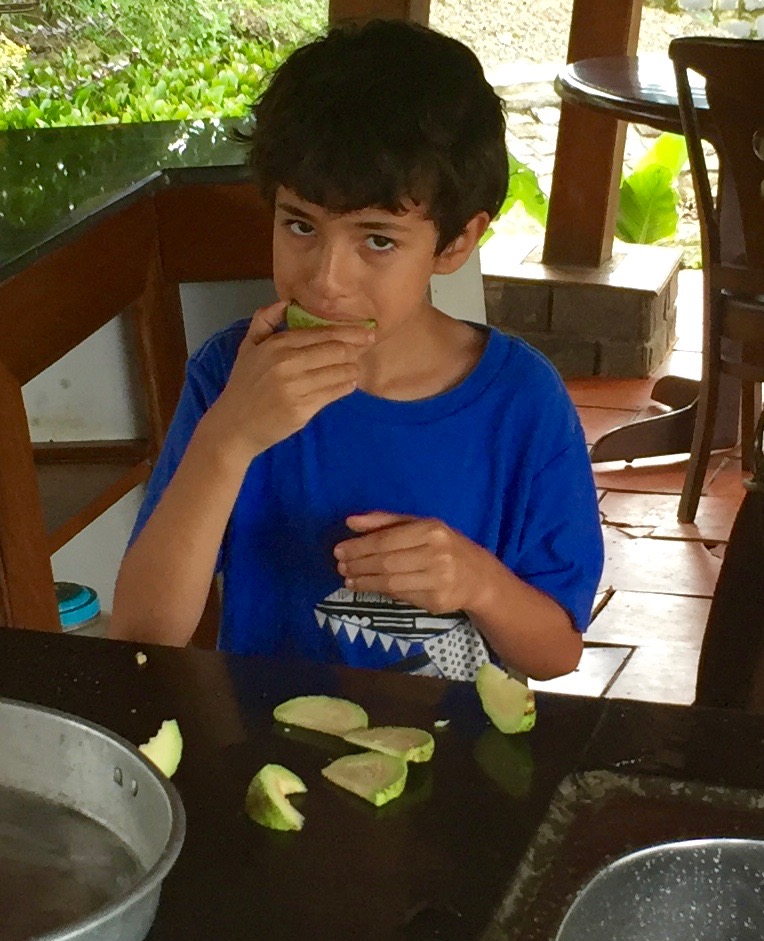
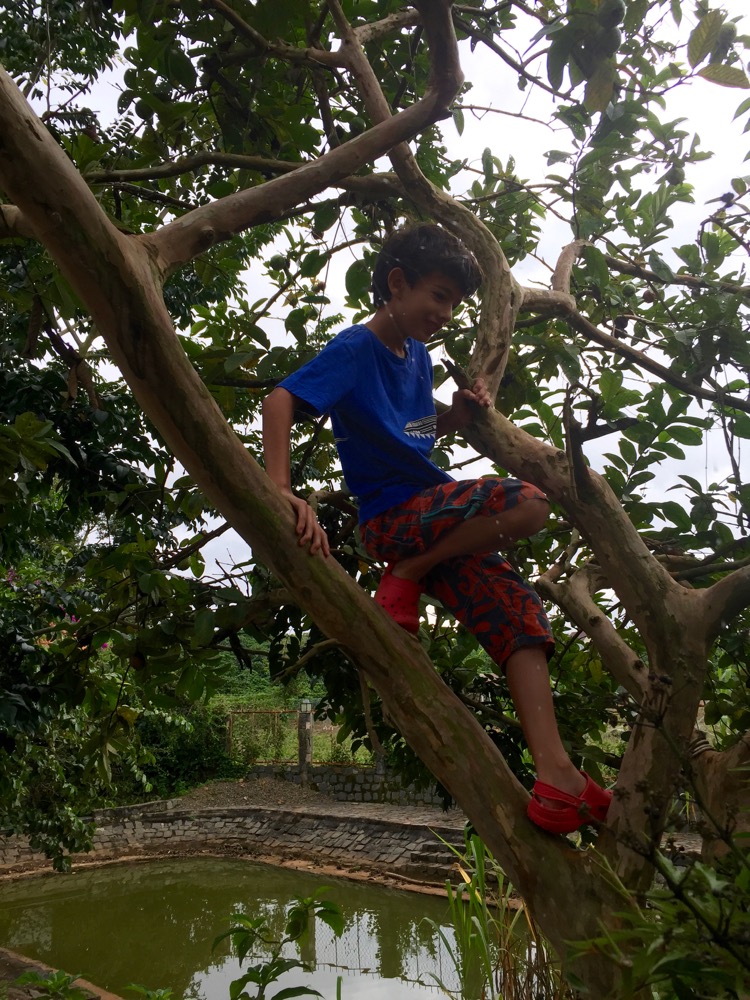

What Marcus loved most of all were the fruit trees--he could just climb up a guava tree and pick fruit, and come down and cut it up at the bar and eat it. He ate custard apples too, but the guavas were his favorites. At one point, our guide and Marcus were both up in the tree pointing at different guavas and discussing which was the ripest. I don't know which of them was having the best time.
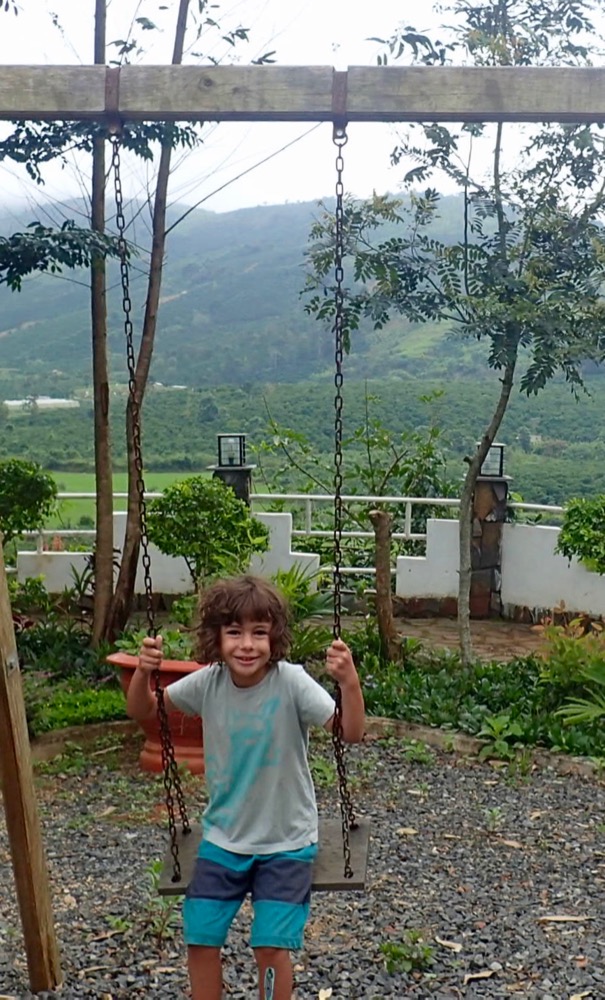

Dinner was a very nice barbeque out on the patio, and once again there were dogs for Marcus to feed the chicken bones to. Samantha would shriek in terror whenever a dog came near her, which made for an interesting evening. After dinner there was a campfire, and Marcus piled on leaves and other random vegetation to his heart's content--normally, when we go camping and have a fire, the fire is strictly controlled, not primarily out of safety but to avoid smokiness, but here no one seemed to care.
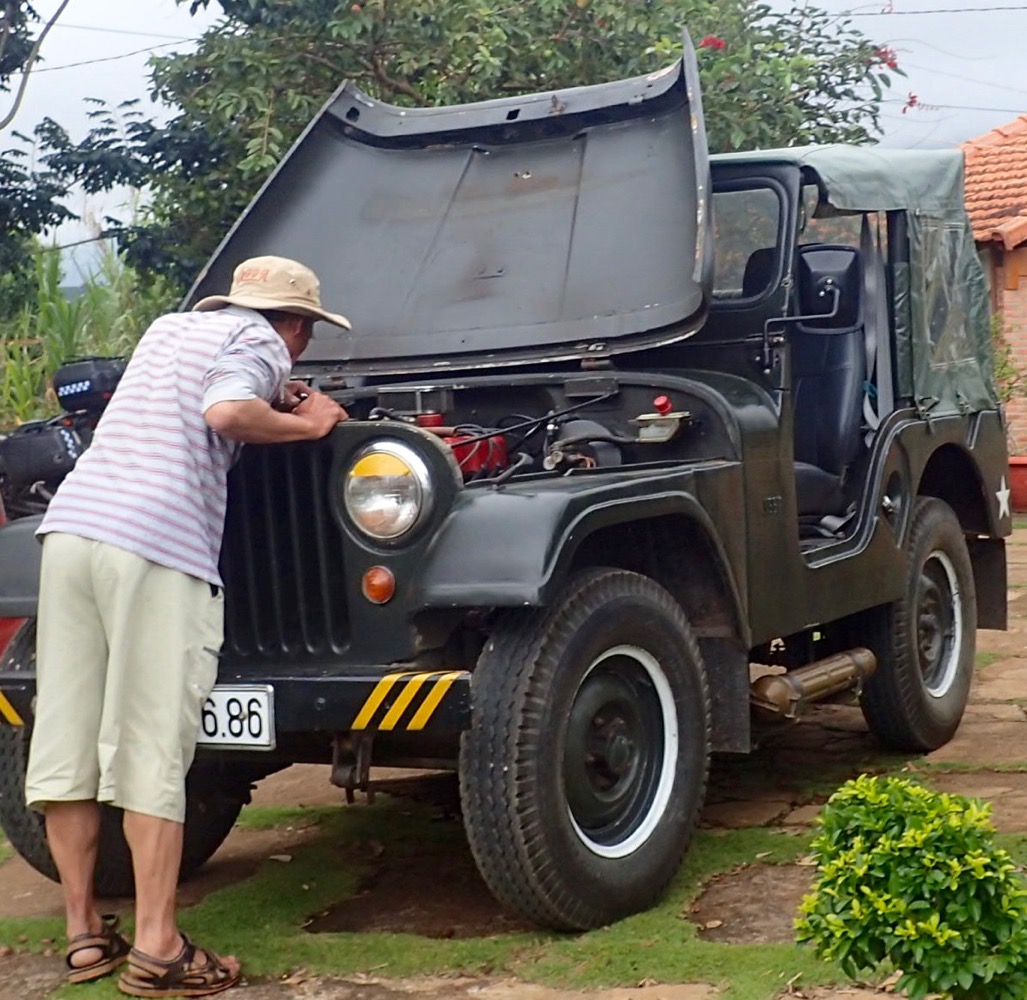
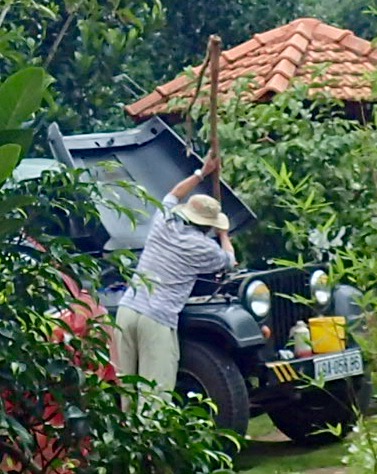
The next morning we had a nice breakfast--more omelets with bread and jam, more freshly-picked guavas, and pan-fried noodles with vegetables topped with a fried egg--and watched our driver performing his ritualistic daily Jeep maintenance. I have no idea what the purpose of that giant stick was. We got back on the road for our final day with the Easy Riders, stopping at what was described to us as a "curry plant" with bright red berries. We couldn't really figure out what the plant was, because the leaves didn't look like the curry leaves that we know, but Marcus did love the dye properties of the berries.
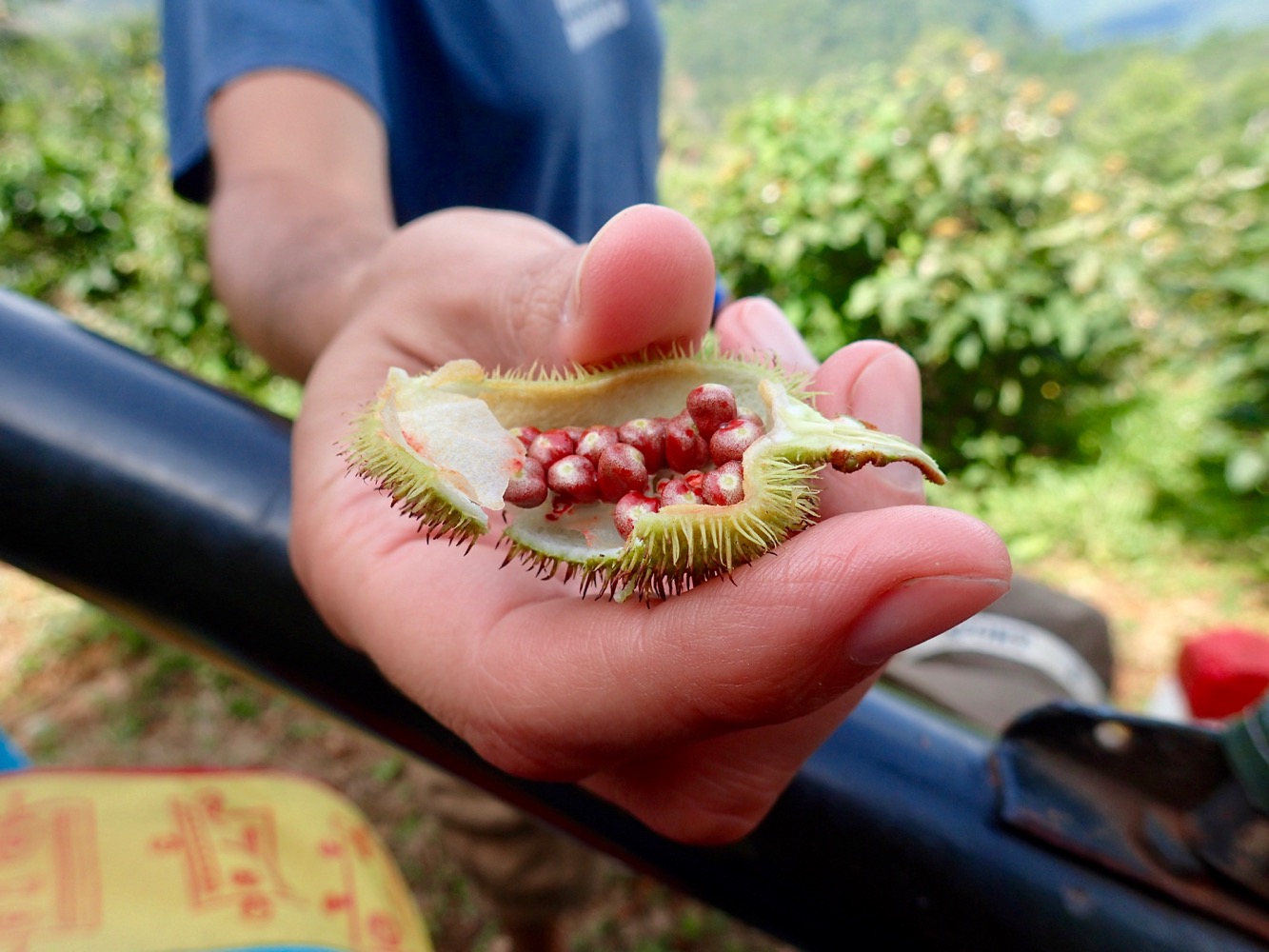

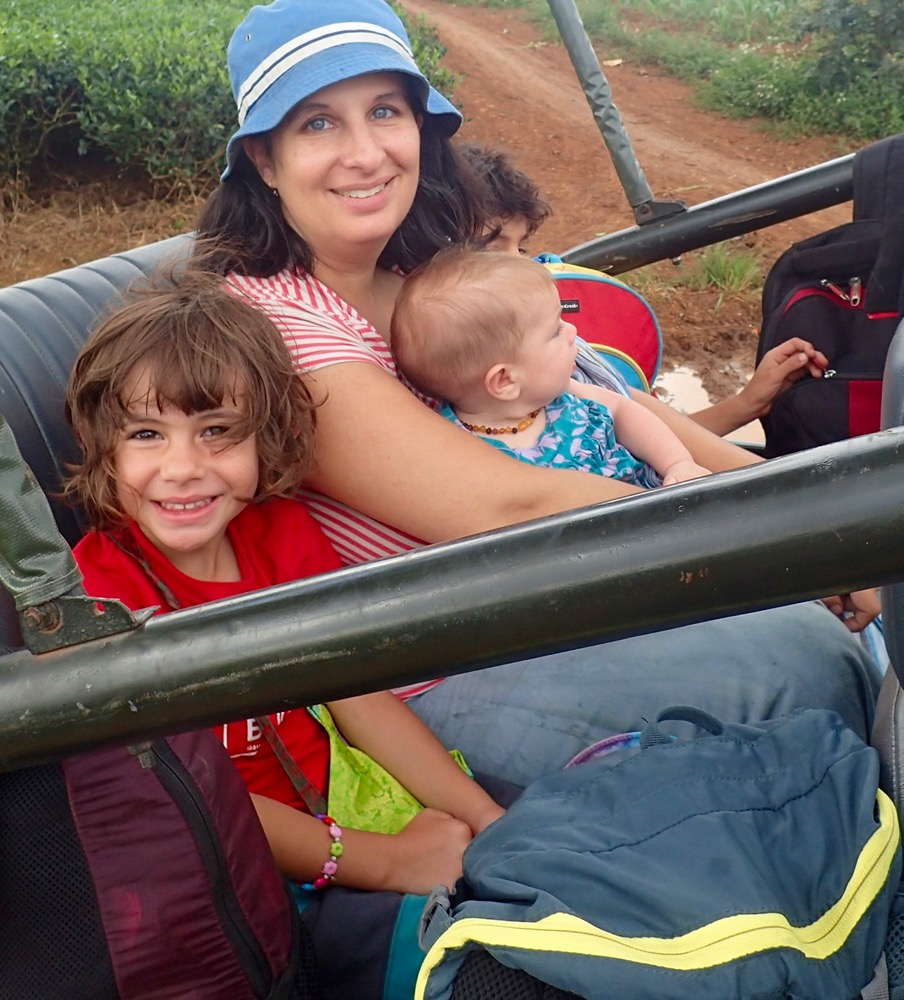


We stopped again at a general store type place for some snacks (durian cream cookies smell exactly as you would expect, by the way. Thanks, Robert, for stashing the open packet in my pocketbook!) and then at a nuoc mia (sugar cane juice) stand. Marcus and I loved chewing on the sugar cane stalks. Meanwhile, I'd been asking Robert to take some pictures of the propaganda-style posters we saw all over, and he finally managed to capture this gem--fourteen years of friendship between Vietnam and the USSR? Plus something about 1.5 gigabytes of data? Sign me up, baby.

Go back to web essays.
robertandchristina.com
was made with a Mac.
© 2016 C&R Enterprises
Email christina@robertandchristina.com
or robert@robertandchristina.com
Created: 9/3/16. Last Modified: 9/3/16.